Tricks to Take Great Hotel Photos Even If You Are Not a Photographer

Pavla Bartonova
Founder
You will agree that great photographs are inevitable for a hotel to inspire people to book their stay.
Fact:
Hotel photographs sell your place! They catch people’s attention & make first impression. They contain inviting moods and spark imagination.
You might also agree that the best option is to hire a professional photographer, but such services can be very pricey and sometimes it is not easy to find a great one.
You might not be born a photographer, but – there are a few TRICKS that could enormously improve your own self-made hotel photos.
If you apply some of these tips your photos will look much better.
If that sounds interesting, let’s dive right in!
Every month the Trivago content team rejects hundreds of images submitted by hotel managers. Why? The photos fail to meet our quality standards. Secondly, it may sound cruel, but no image can be less damaging than a bad image. Trivago website
A quick sum up of steps to amazing hotel photography
- Buy, borrow or rent a good camera or phone.
- Prepare your place – tidy, style, arrange.
- Take into consideration your unique selling point (USP).
- Be ready at the golden hours (early morning & dawn) on a bright day.
- Take lots of photos in DRO or Auto HDR mode.
- Use people in your photos.
- Tell a story with your photos.
- Do computer corrections.
Before we go deeper, let’s see a few examples of great & bad hotel photography.
Examples of great hotel photos: state of the art photos of Palladium hotel
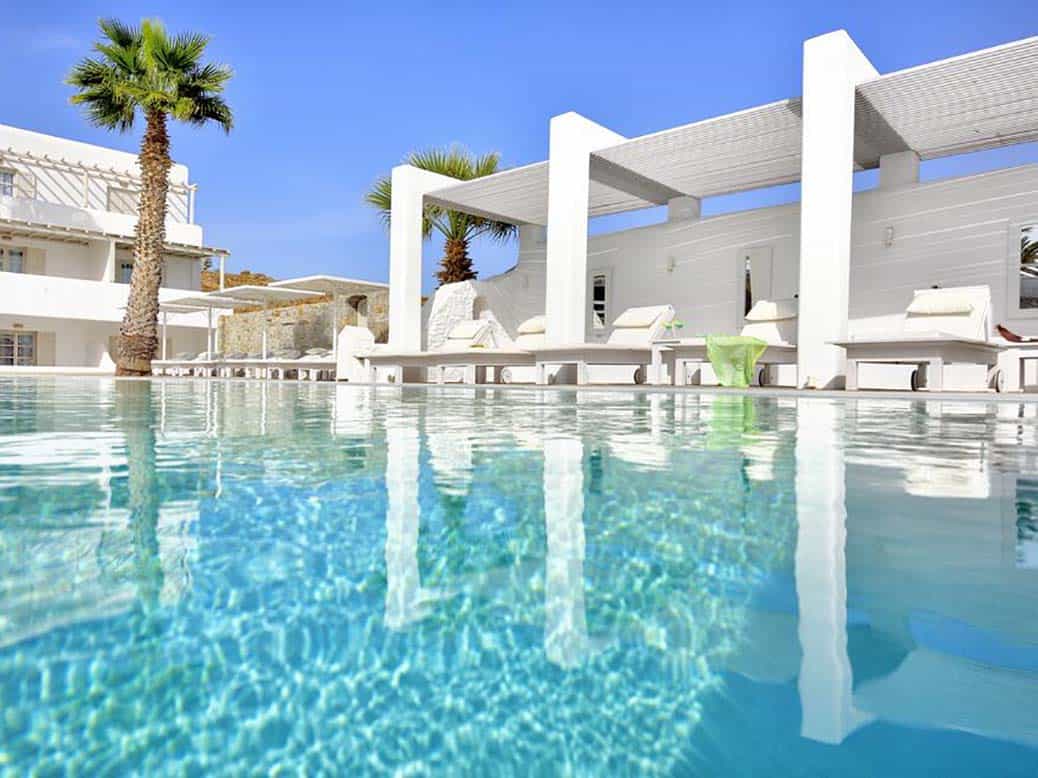
Professional photo taken at an interesting angle from the pool, is full of light, has great composition, it follows the rule of thirds.
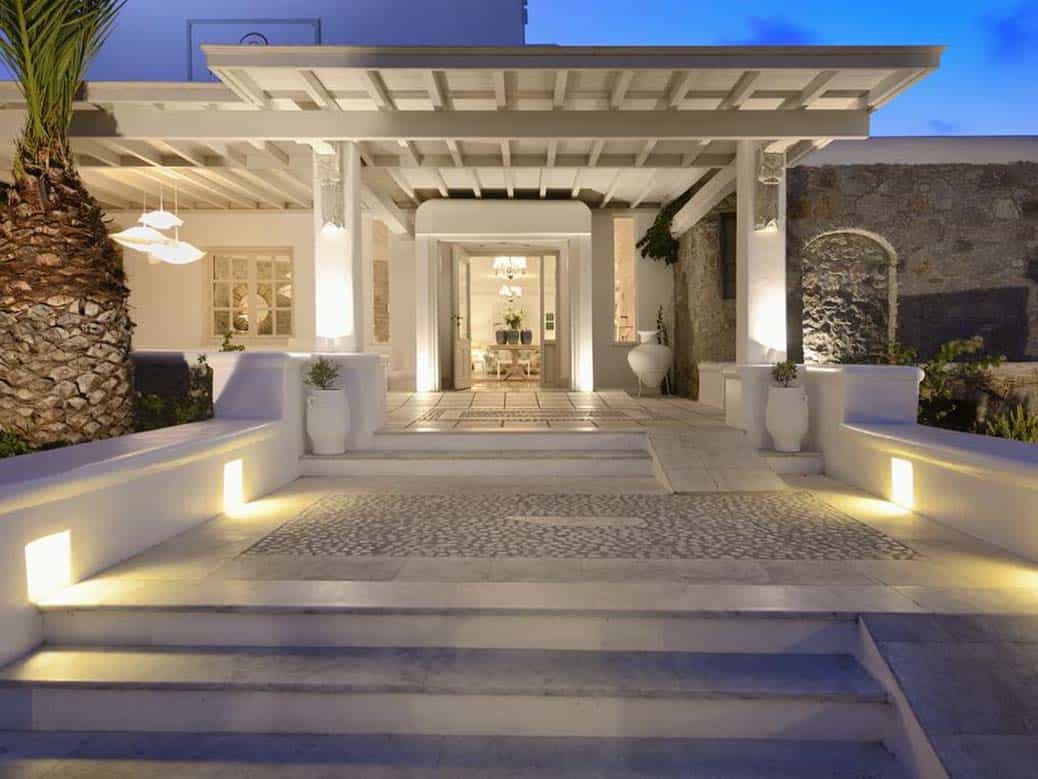
This evening photo full of warm lights invites guests to come in. Great composition.
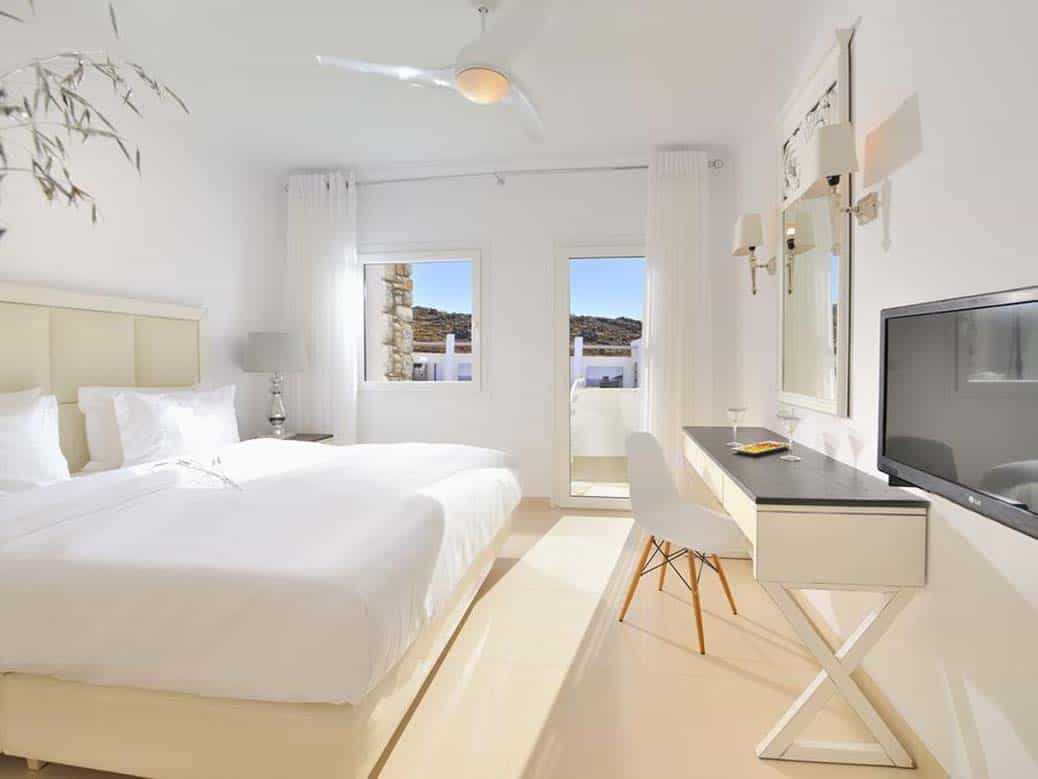
Combination of natural light and studio lights. The ceiling light and the lamp are switched on to add an extra warm mood.
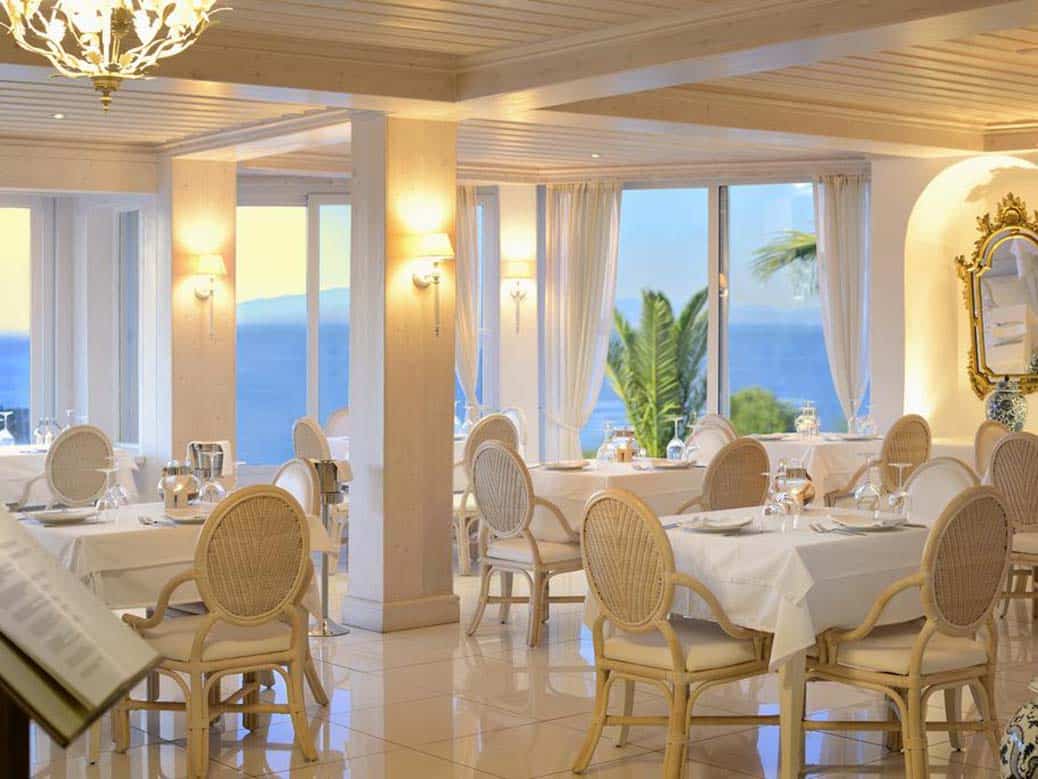
Even at daylight, all lamps are on and give away warm yellow light to create a cosy atmosphere.
Examples of bad hotel photos: even upscale hotels in Miami can have crappy photos – and crappy style!
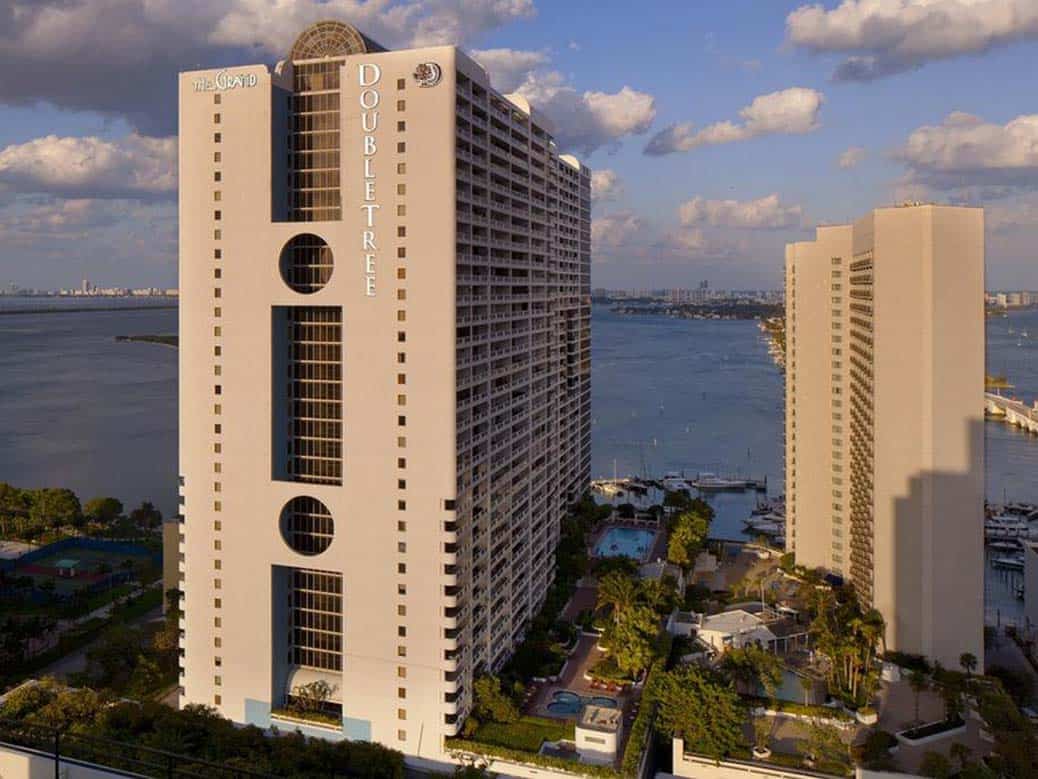
A big hotel that doesn’t invest in a photographer nor a good camera will end up with photos like these.
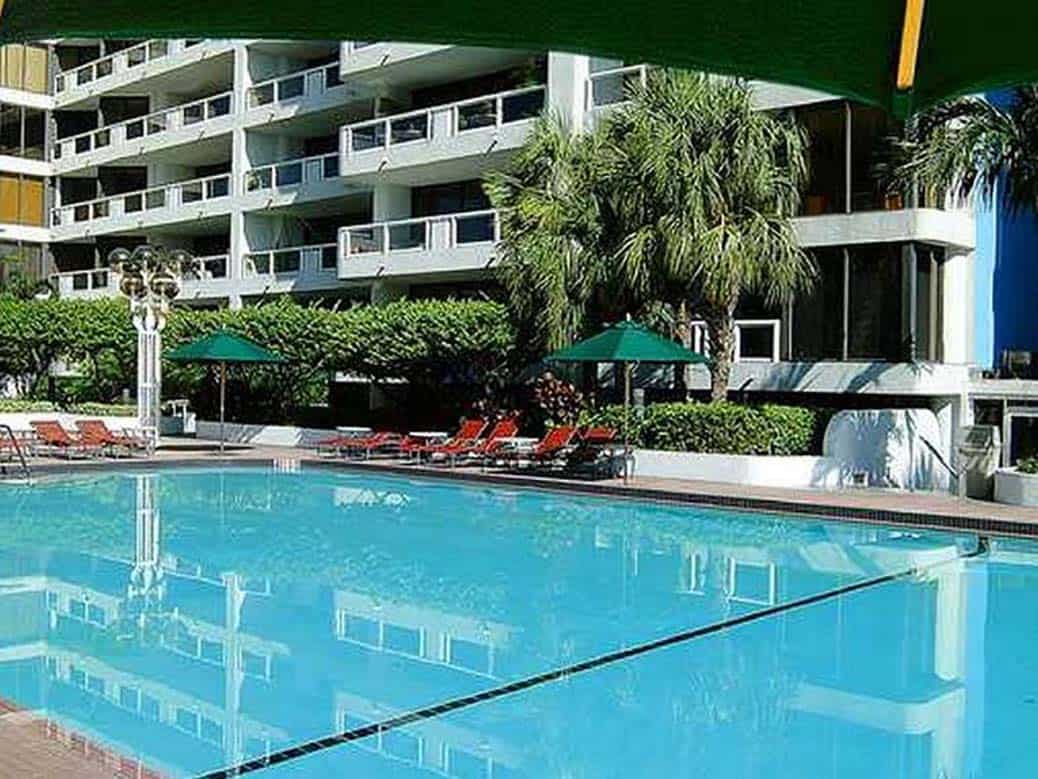
Dark, uninteresting, without a human touch.
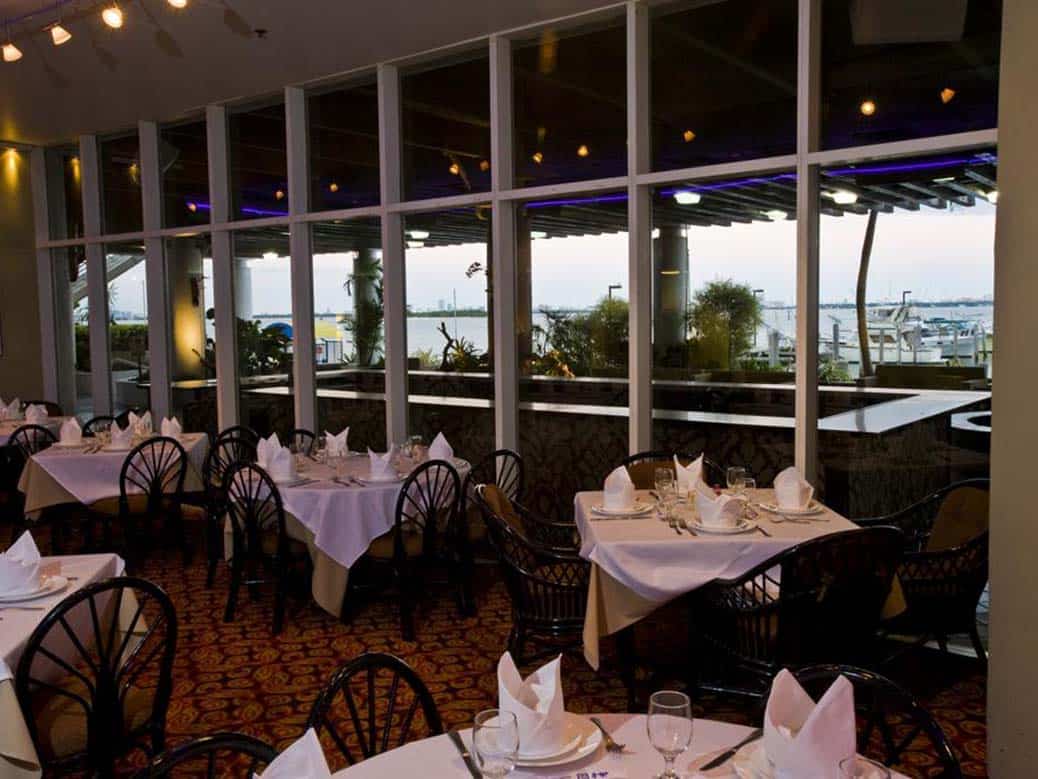
This space looks like a deserted dining room no one really wants to have dinner in. It evokes loneliness and an anticipation of bad food and service.
1. Buy, borrow or rent a good camera or phone
Phones
Dead serious, phones! You would be quite amazed at photography capabilities of the latest smart phones.
Like, the latest Huawei with Leica lens – the photos are wow.
And did you know you can use an external lens on smartphones? How cool!
iPhone 6 sample photos
Yep, iPhone 6 is already an old model, but even this one could make some decent pics in favourable light conditions. Here a few unedited straight from the device sample photos to demonstrate what photo quality you could get from an older phone (without photo lighting, only natural light – or, a lack of it).
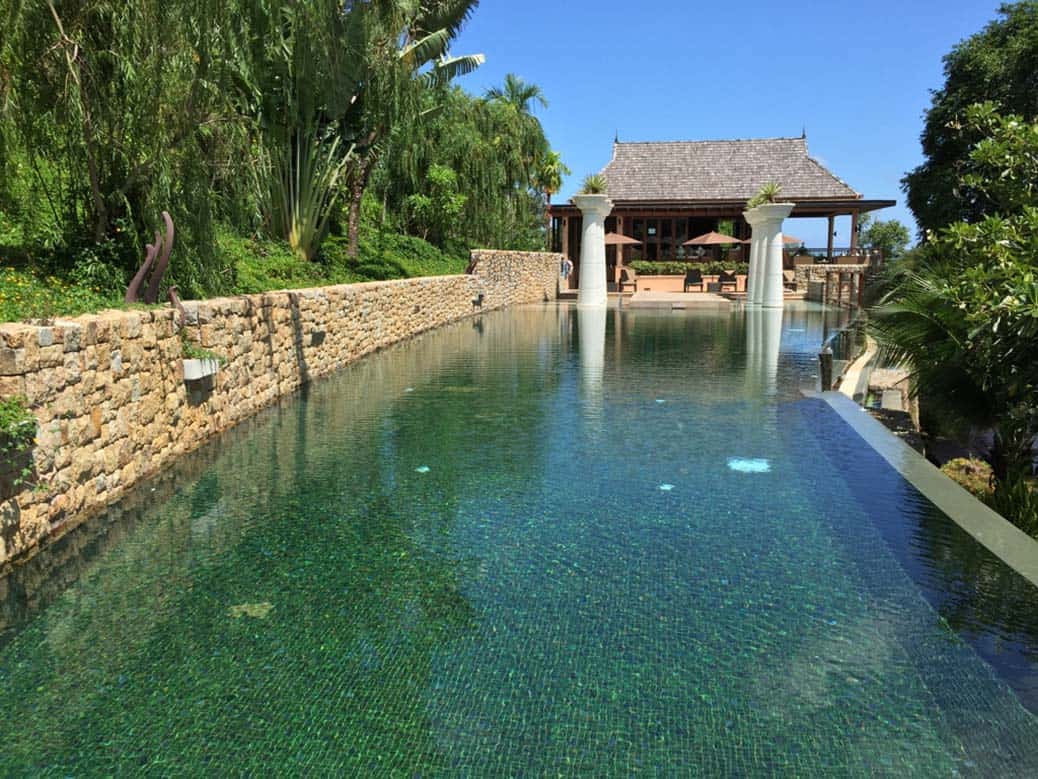
iPhone 6 takes good photos in bright light conditions.
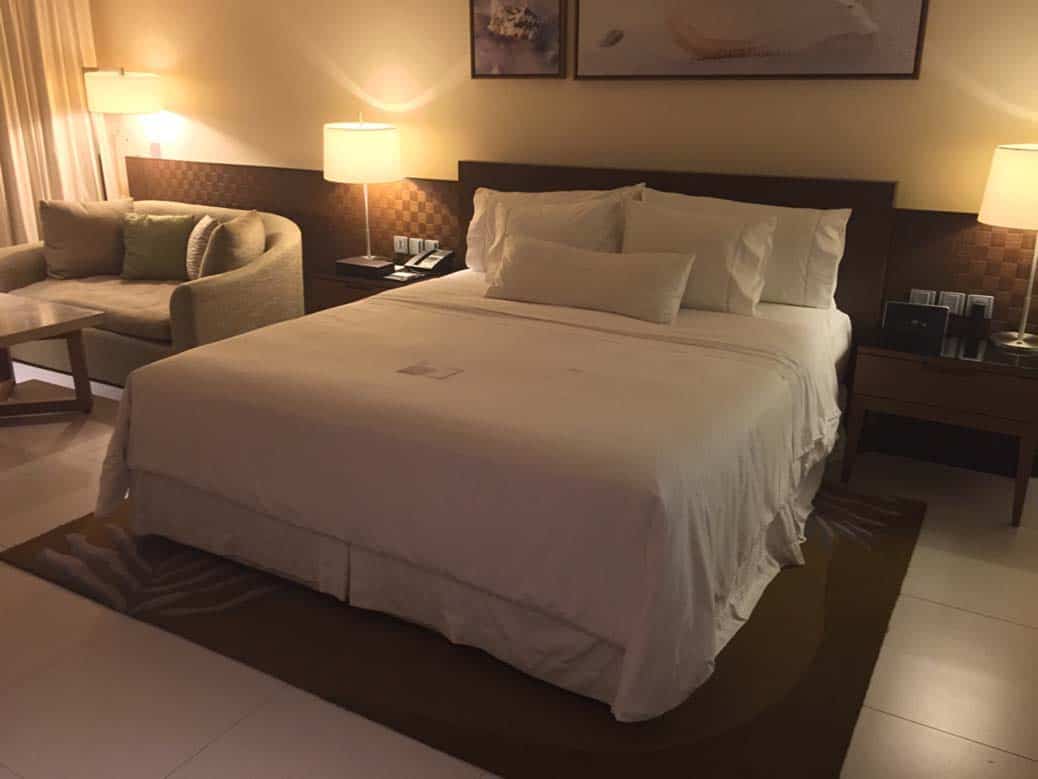
The iPhone doesn’t do so well in low light conditions. However, this photo could be improved in a photo editing program.
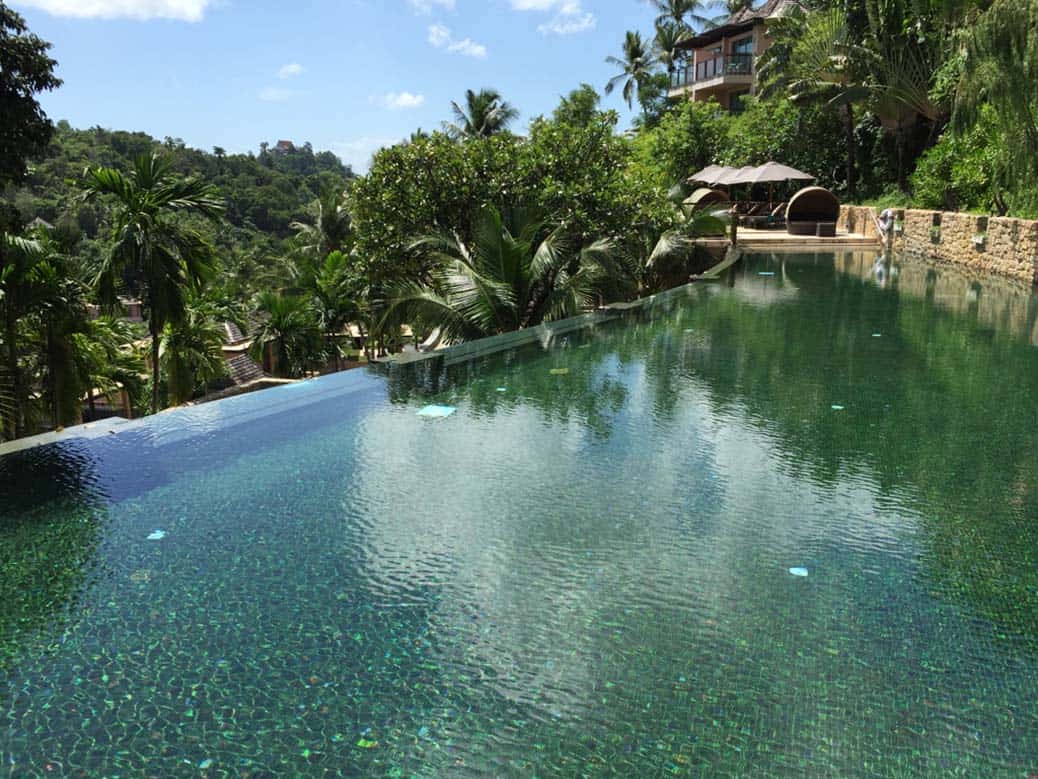
Fine photo taken on a bright day.
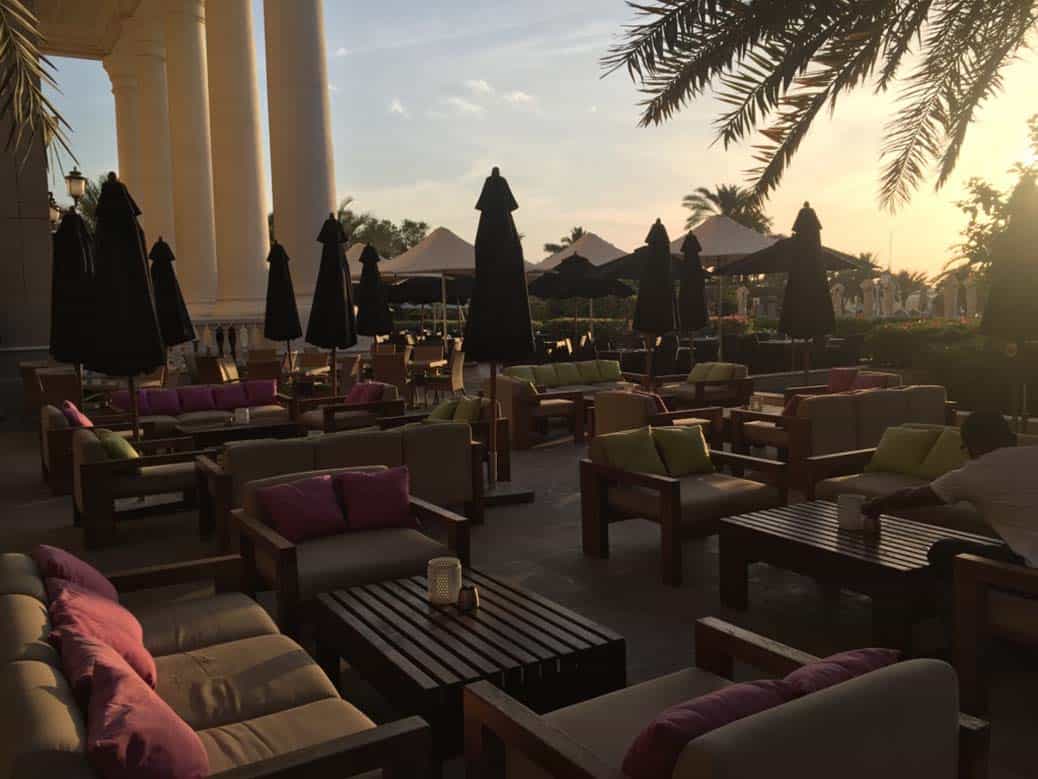
The phone camera is not sensitive enough to produce a brighter image in a low light condition. This photo needs editing or replacement.
Cameras
Honestly, depending on which camera you get, the cost of equipment can be as high as hiring a photographer – but will be cheaper in a long run.
You will be able to use your camera anytime you make renovations or style changes of your property without an extra cost in the future.
And surely you upload photos to your hotel’s Instagram account or Facebook regularly? Getting a good camera is an investment with a great return, you can use it again and again.
But which one is the best?
Mid-range market cameras with interchangeable lenses would be a good compromise between price and quality.
Avoid low-end compact cameras, for sure.
Go for pricier high-end cameras if you have the budget.
Additionally, you need to get a good lens for all these cameras.
Zoom lenses would be a good choice as you can take both landscape and close-up images with just 1 lens, as opposed to prime lenses (which can not zoom).
There are hundreds of lenses on the market, choosing one depends on your budget. Don’t go for the cheapest ones. Reading product reviews of other lens buyers is very helpful.
Some cool cameras are:
- Canon EOS 1100 D.
- Nikon D3300 (beginner level, around $400) or Nikon 3400 (also beginner level, around $500).
- Nikon D7200 (mid-range, around $1300).
- Canon EOS Rebel T5i (good for videos, around $600)
- Olympus OM‑D E‑M10 Mark II (around $650).
- Sony A7 models – they are seriously GREAT, we tried! (Sony A7 – around $1100 for a body with 28 – 70 mm zoom lens, a good combination for property photography. Or the latest models: Sony A7II R and S, Sony A7III /around $2500 & $2700/ or Sony A9 /this one might be a blow to one’s budget, price of $4500/).
The first 4 cameras are the ‘old good’ DSLR (digital single-lens reflex) cameras, the latter ones (Olympus and Sony) cameras are the ‘latest hit’ MILC (mirrorless interchangeable lens) cameras. This article discusses differences between the 2.
A good tip: Sony A7IIS is specially tweaked for videography – you might find it very handy if you like to make videos of your property for Youtube etc. A superb thing to do!
Sony A7SII sample photo
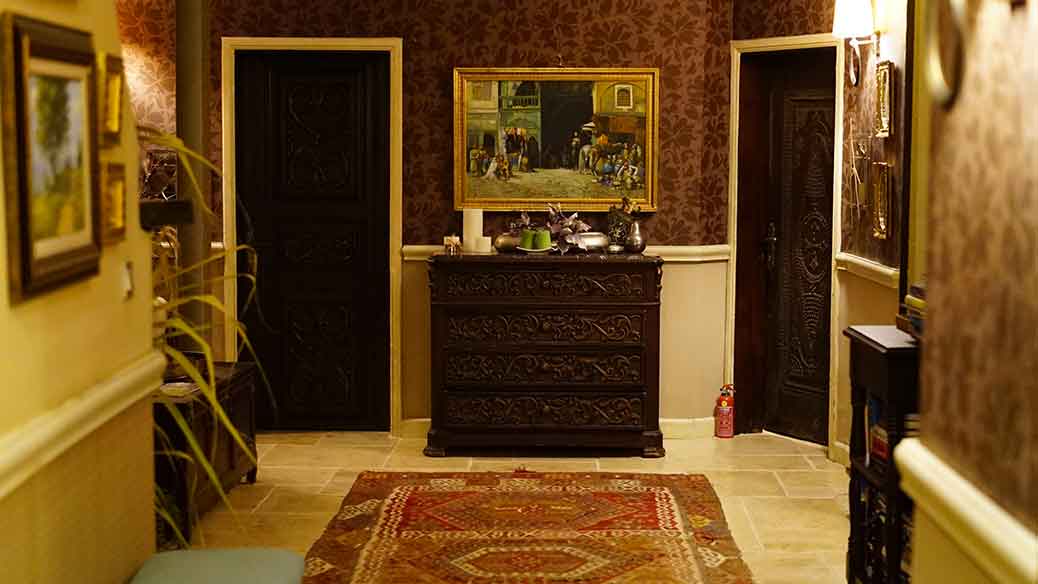
The camera has a max ISO of 409600. It makes great night shots. Great for dimly lit room photos.
2. Prepare your place – tidy, arrange, style
Arrange & style
Seriously, this could be the most important step in your hotel photography.
Styling is a form of art that creates the personality of a hotel.
What is gonna be in the photo must look good. No photo editing program will help you with badly styled room.
Slightly rearrange furniture, set chairs nicely around a table, open/close windows, fix curtains, position artwork, place amenities, unclutter rooms – these do wonders for photos.
Beware, the property and rooms should look about the same way in the photographs as they do in reality. Move furniture too much, add things that will not be in the room when guests arrive – and leave your guests feeling deceived.
Very important part of styling rooms is selecting the right colors that create harmony and mood.
Let’s discuss color harmony a bit more.
A visually appealing, well designed room is based on harmony and balance of color.
Color harmony
Harmony is something that is pleasing to the eye. It engages the viewer and it creates an inner sense of order, a balance in the visual experience.
You might know the desired effect of matching colors can create very different settings: a relaxing, luxurious, romantic, uplifting or energized room..
Unfortunately, a room created without color harmony in mind can give away a feeling of chaos, cheapness, disorder, bad taste and can influence the guest’s decision to book – in a negative way.
The human brain rejects what it can not organize, what it can not understand. The visual task requires that we present a logical structure. Color harmony delivers visual interest and a sense of order.
Therefore, before you start taking photographs of your rooms, double check if they have the right color balance.
Luckily, to get color harmony right is not hard.
If you are not naturally gifted in combining colors, use tools and guides to help you, in a paper or digital form. Such as color wheels (the colors of the visible spectrum arranged into a circle) that help establish harmonious color sets.
These online palette generators are at your service for free and it is fun to use them:
More than one color in a room can look great, but keep it to three colors maximum. If you choose two bold colors, the third should be a neutral color – to give the eyes a break.
Check out this nice article: learn the basics of color theory to know what looks good.
And sure you know about the beautiful classic neutral palette that includes only colors not found on the color wheel – such as beige, brown, gray, ivory, taupe, black and white?
We could say these are hues that appear to be without color or have very little saturation. These colors are a critical component of great design. They are visually relaxing and restful and they work well with any decorating style.
This article explains why neutral colors are the best.
Pantone company sells great paper color guides and has a handy phone application Pantone Studio with a 7‑day free trial.
In addition to color schemes, 60−30−10 rule for using colors says that for the most balanced, appealing look you shall decorate with one dominant color the majority of the space (60 %), with another, secondary contrast color that fills roughly half as much space as the dominant color (30 %) and a third accent color (10 %).
For those who use Pinterest, we compiled a collection beautiful use of colors in interior design of mostly interior photos with great color schemes that might inspire.
Room styling & color harmony photo examples
Color harmony got right
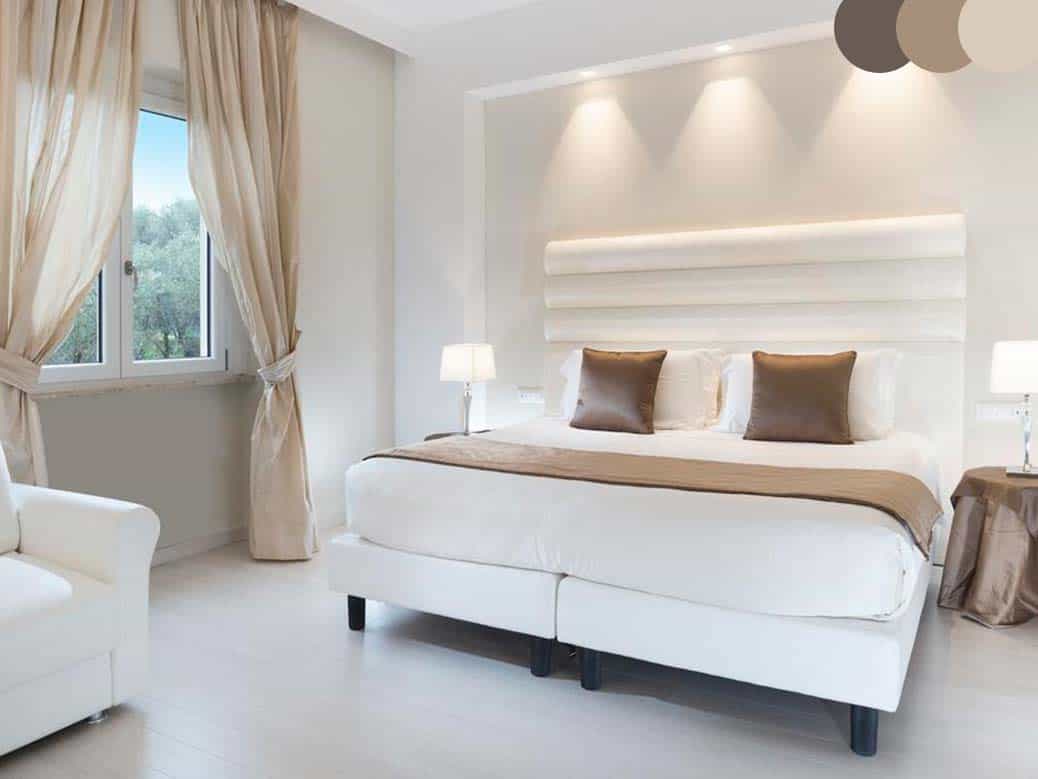
White matched with other neutral color, brown. Result – clean relaxing luxurious space.
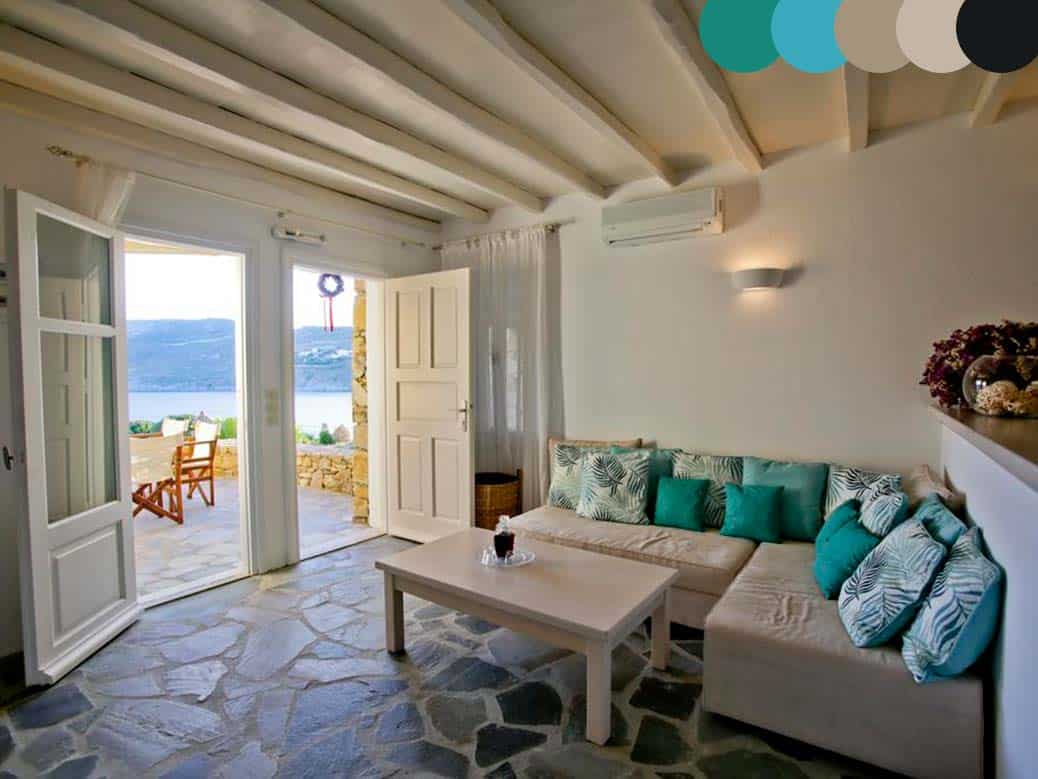
White, beige and turquoise shades – this combination is really refreshing in hot Greek Summer.
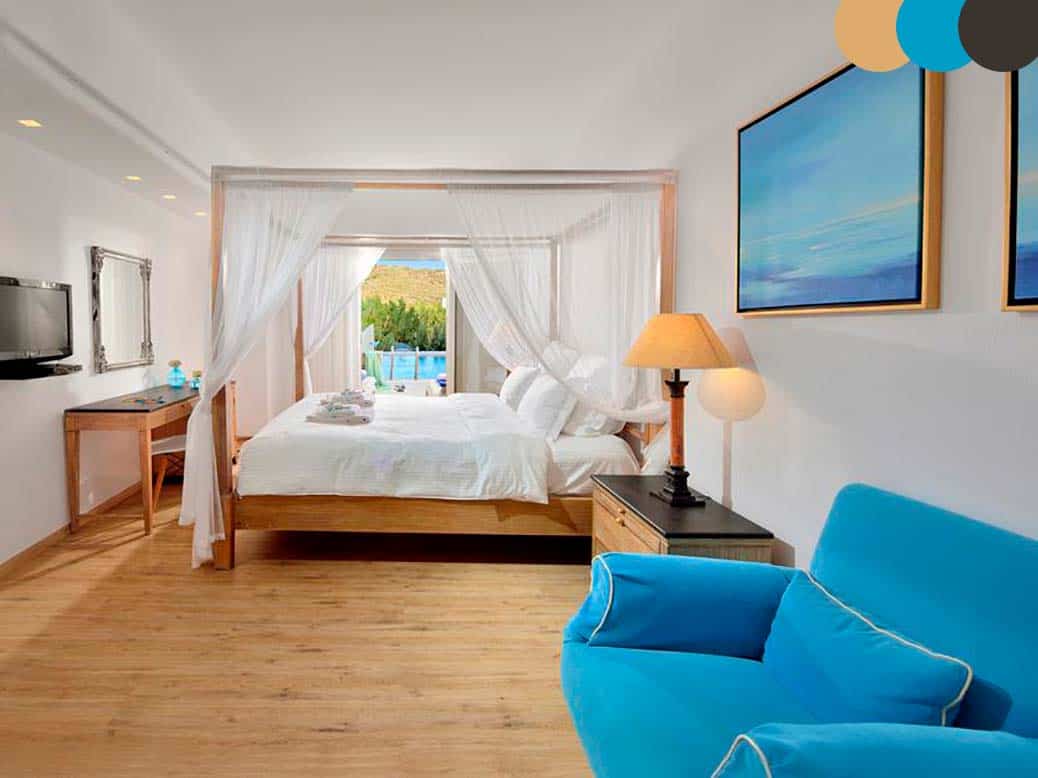
Calming combination of neutrals – white, beige (light brown) – and blue. Blue items in the room match the color of the swimming pool.
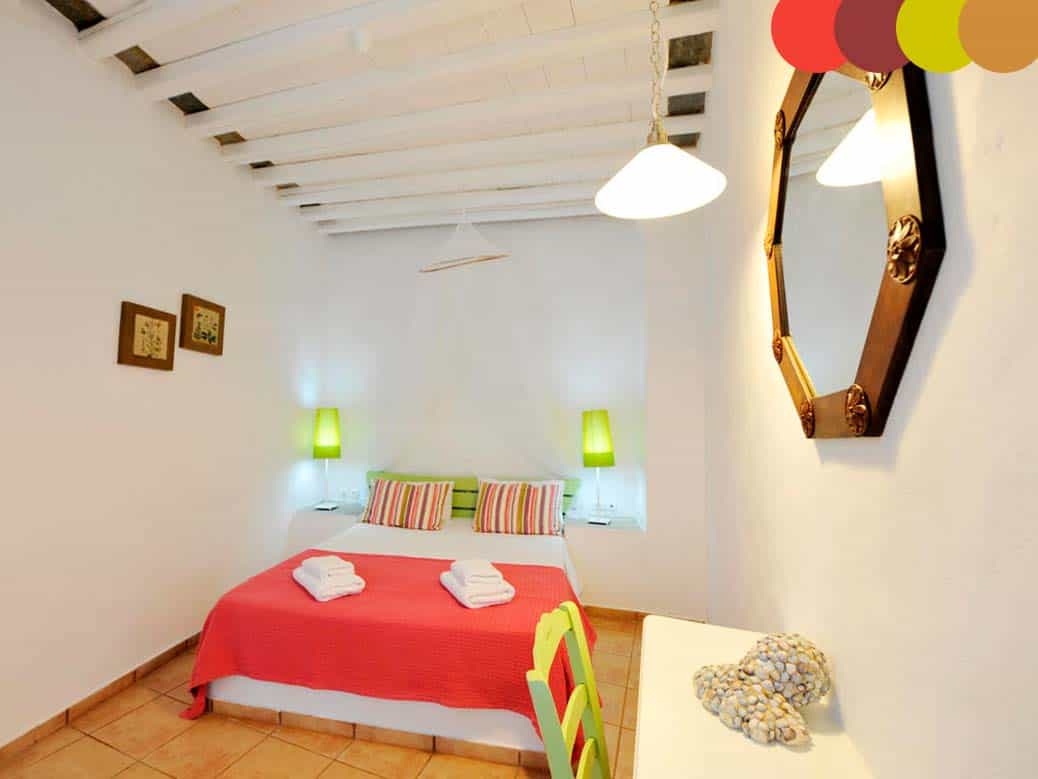
Green and red are opposite to each other on the color wheel, they are complementary colors. Their high contrast creates a vibrant look. The strength of these colors is eased out by neutrals.
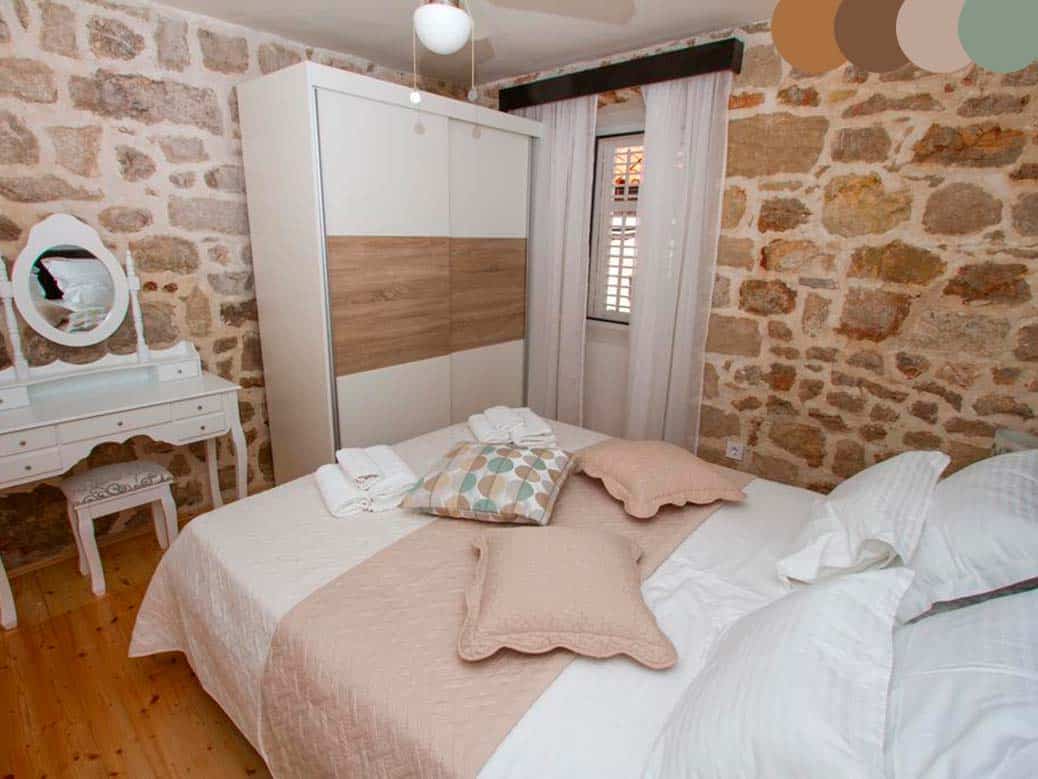
Beside white, beige combines well also with blue, brown, emerald, black and red. And this is exactly what they did here – notice the subtle emerald detail on the pillow. Like a cherry on the cake!
Room styling & color harmony got wrong
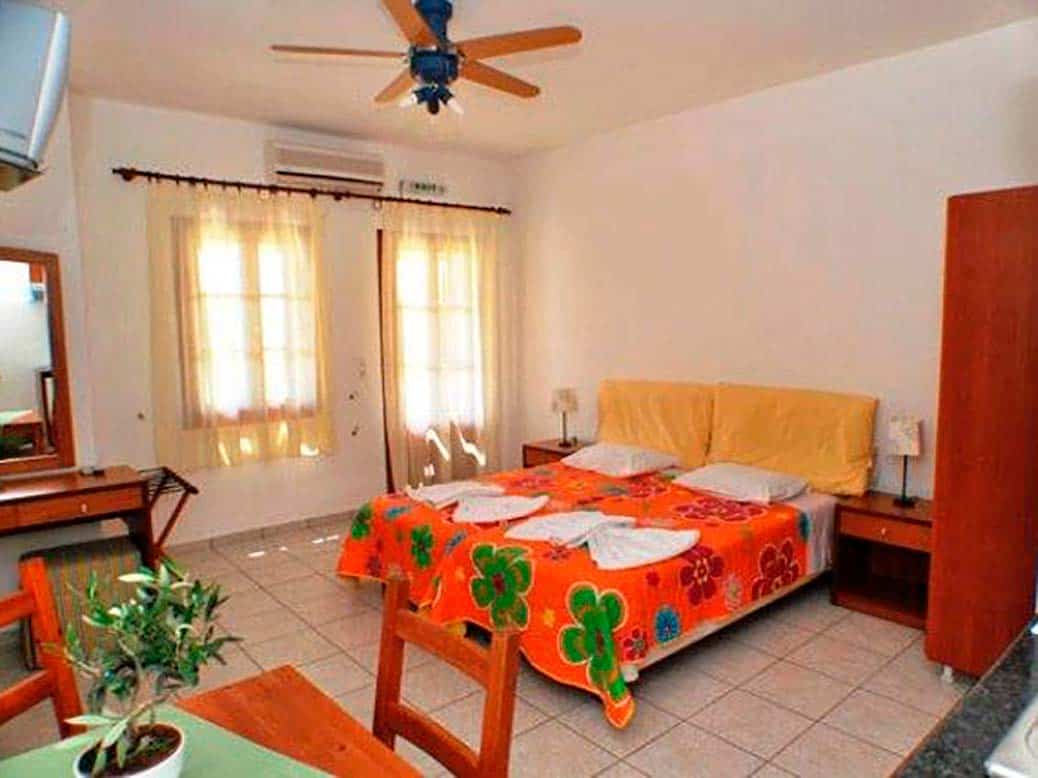
There was an intention here to combine colors but they are breaking one important rule: “Keep it to 3 colors maximum. If you are going with 2 bold colors, the 3rd should be a neutral to give your eye a break”. Too many colors in a room will create a visually ‘loud’ space.
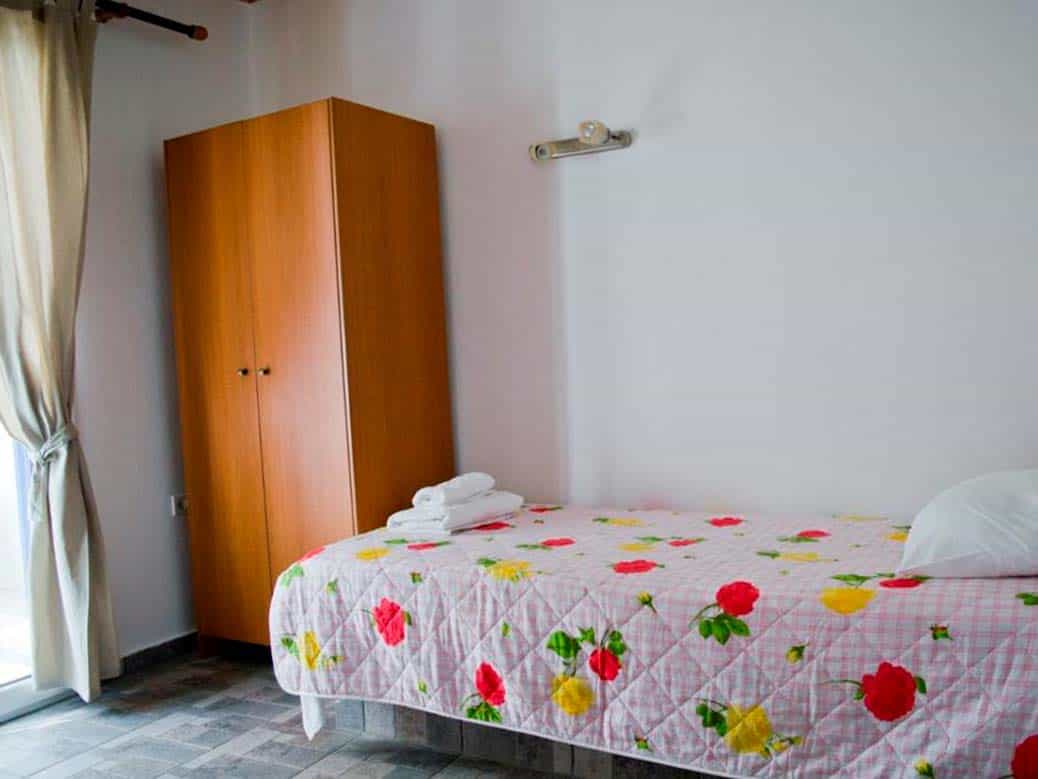
This styling breaks the same rule as the previous one – too many colors. The bed cover already contains three bold colors and also combines roses, squares and lines. Example of how just a single piece of fabric can ruin everything.
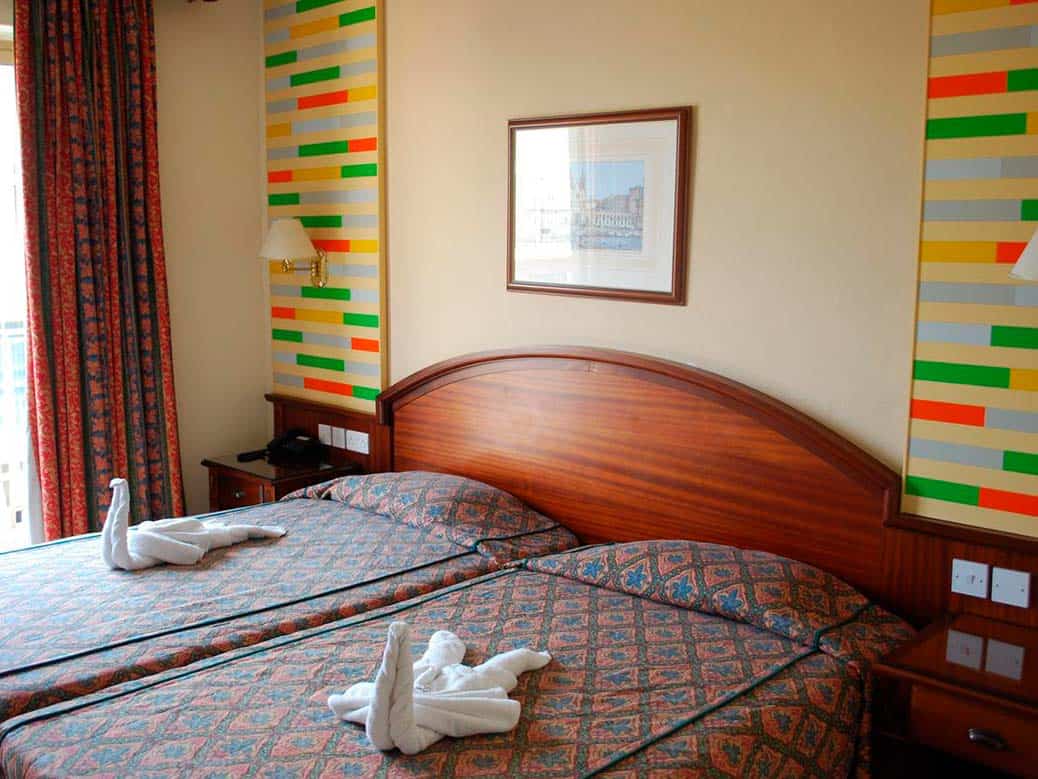
Too many colors and patterns that do not create harmony.
3. Take into consideration your unique selling point (USP)
You are the person who knows best why your property is unique and why your guests would choose you over someone else.
Highlight this uniqueness in your photos. Show your website visitors the benefits of staying at your place. Bring all the awesome things about your hotel out to them.
Unique selling point examples
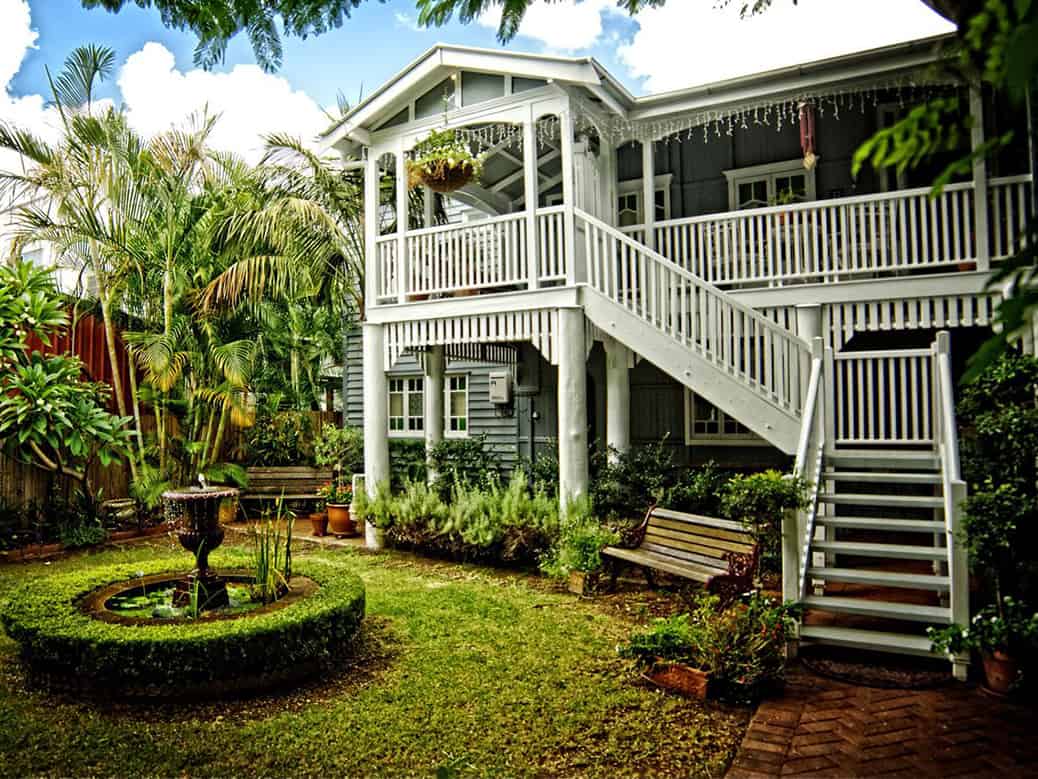
Very nice B&B near the centre of Brisbane is built in an old Victorian/Edwardian style.
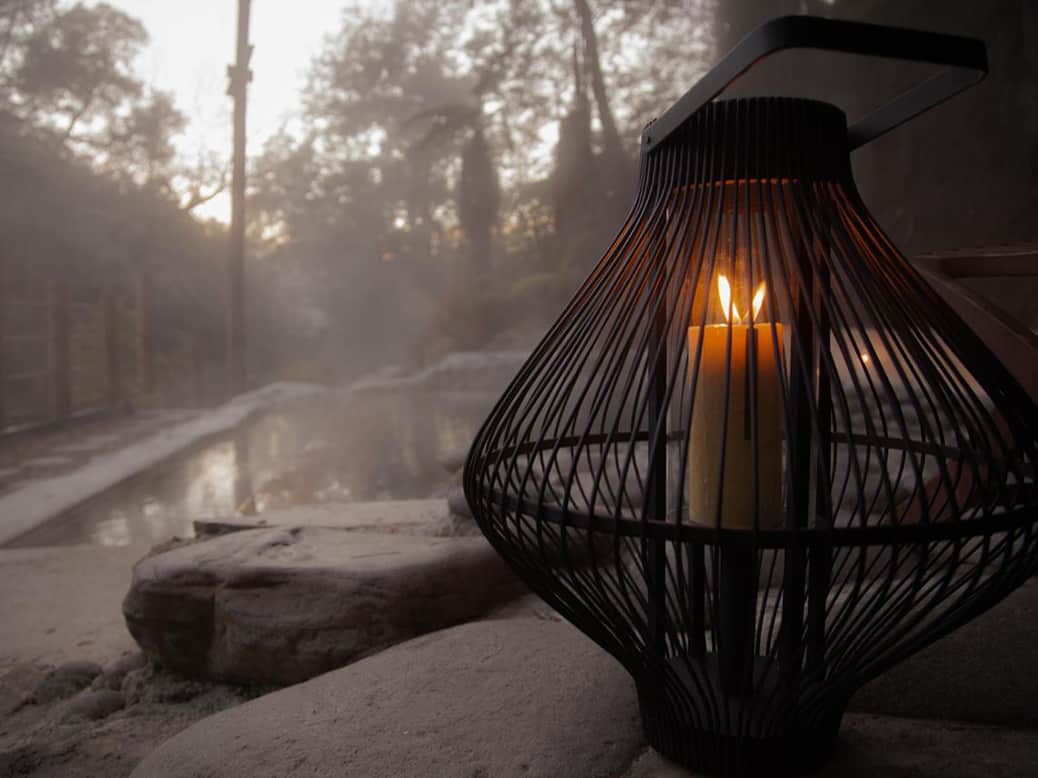
Okoroire hotel has 3 natural thermal mineral hot springs on site.
4. Be ready at the golden hours (early morning & dawn) on a bright day – ALIAS importance of light & mood!
Are you an early riser?
Good news for you!
Early morning (and late afternoon/early evening) are the times to take your photos!
Called the golden hour – a period shortly after sunrise or before sunset during which daylight is redder and softer than when the sun is higher in the sky.
You bet, the golden hour will make your hotel photos MAGICAL!
Even this article says so: how to make your photos magical.
Golden light shows up during golden hour, which is an hour after sunrise, and an hour before sunset. These aren’t exact times though, since it depends on where in the world you live! You might get more or less time for golden hour. Photography Concentrate
Just stop taking pictures on a grey cloudy day – they will be dull, colorless and boring.
Include evening pics and show a cosy atmosphere created by your lighting, guests can picture themselves sitting at your veranda enjoying their dinner or the romantic sunset views.
Importance of light
There would be no photography without light. After all, the word photography comes from the Greek ‘fotos’ (light) and ‘grafi’ (write, draw) – together meaning ‘writing with light’.
Having enough light is vital for taking great photos, even more so in room photography, that’s why it is important to catch the moment when the highest amount of natural light comes into the room through the doors and windows.
Therefore your main concern at a photo shoot is to ensure there is as much light as possible available by choosing the right day, the right time of the day, and if natural light isn’t enough, to bring in artificial lights to help you.
Lamps, flash lights, photo lights – all you can find, bring it in!
Of all the crucial factors in photography, nothing is more important than light. Without light (whether natural or artificial) there is no photograph!
Find ways to discreetly place additional light sources to illuminate dark spots, shadowy places and corners.
This video by photographer Noah Fallis is interesting. He is about to take photos of a hotel room and he smartly installed (hid) photo lights in several places. The equipment will not be visible in the photo but its light will brighten up the shadows. Notice that the room already has a lot of natural light coming from huge windows. And yet, extra lights are still used!
Examples of mood changes in photos taken at different day times
Archipelagos Hotel
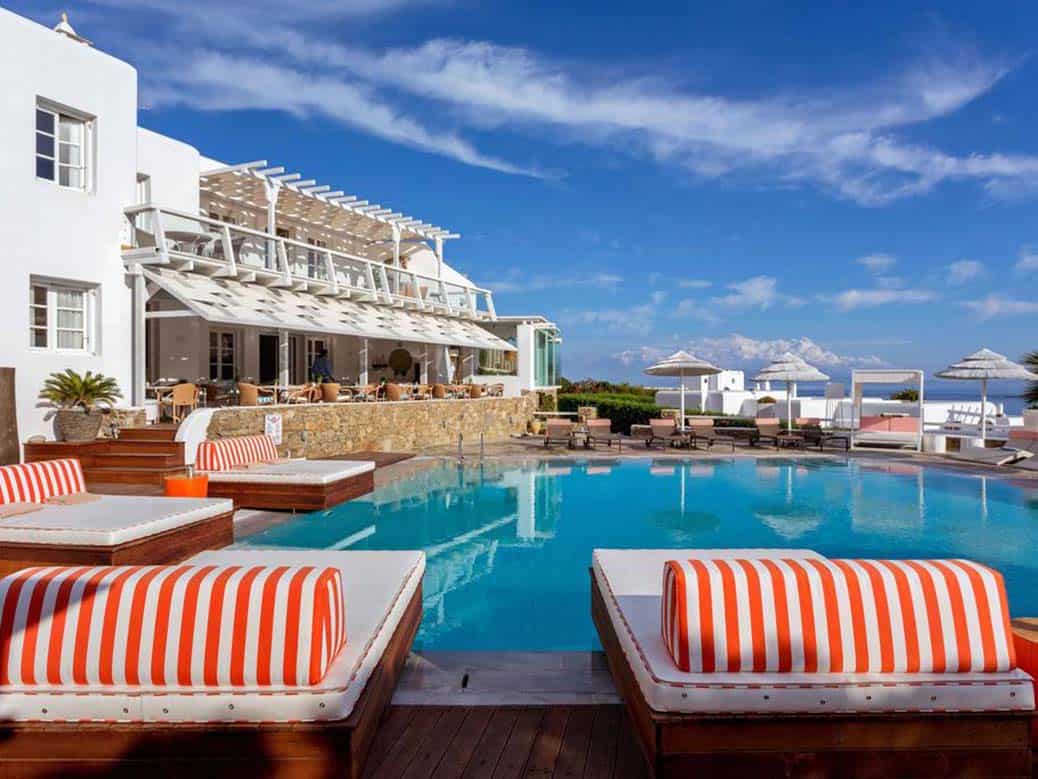
Morning photo, clear and fresh!
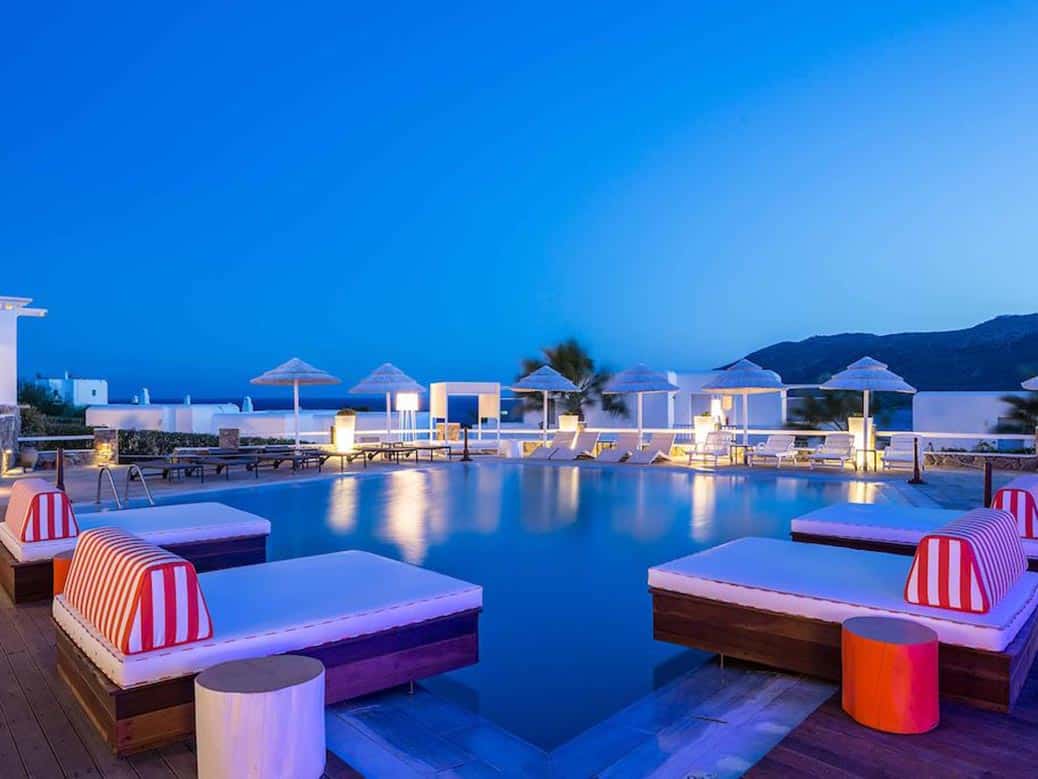
Romantic and inviting evening photo
Nissaki Boutique Hotel
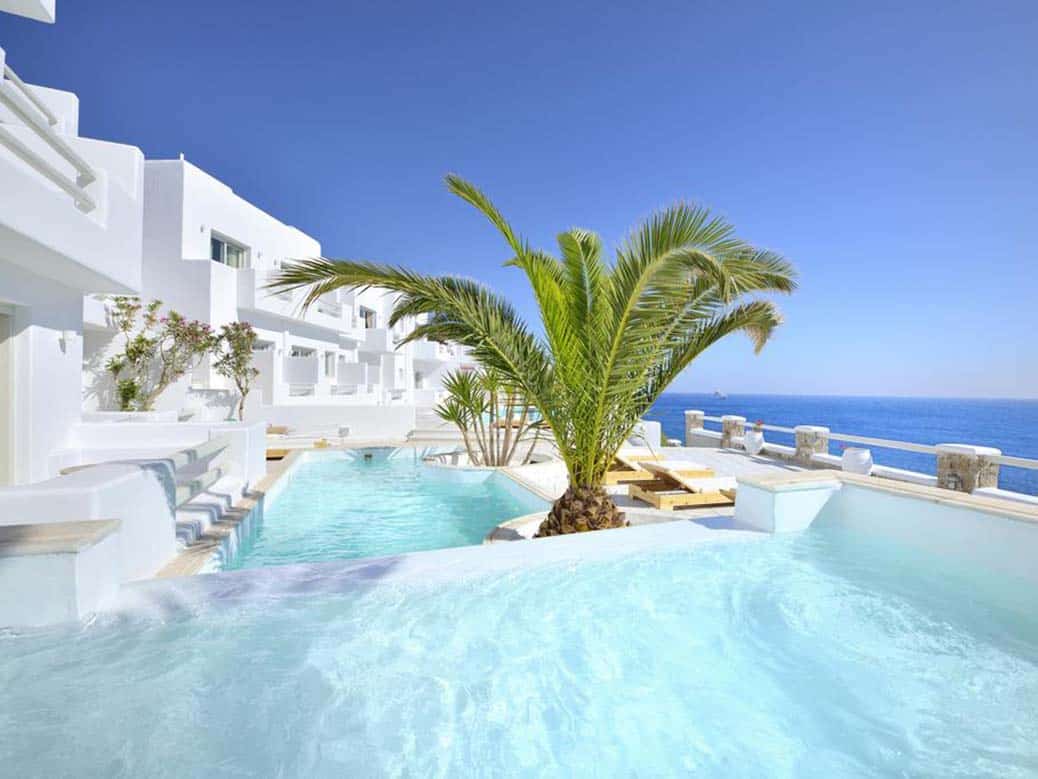
So crisp, bright, refreshing.
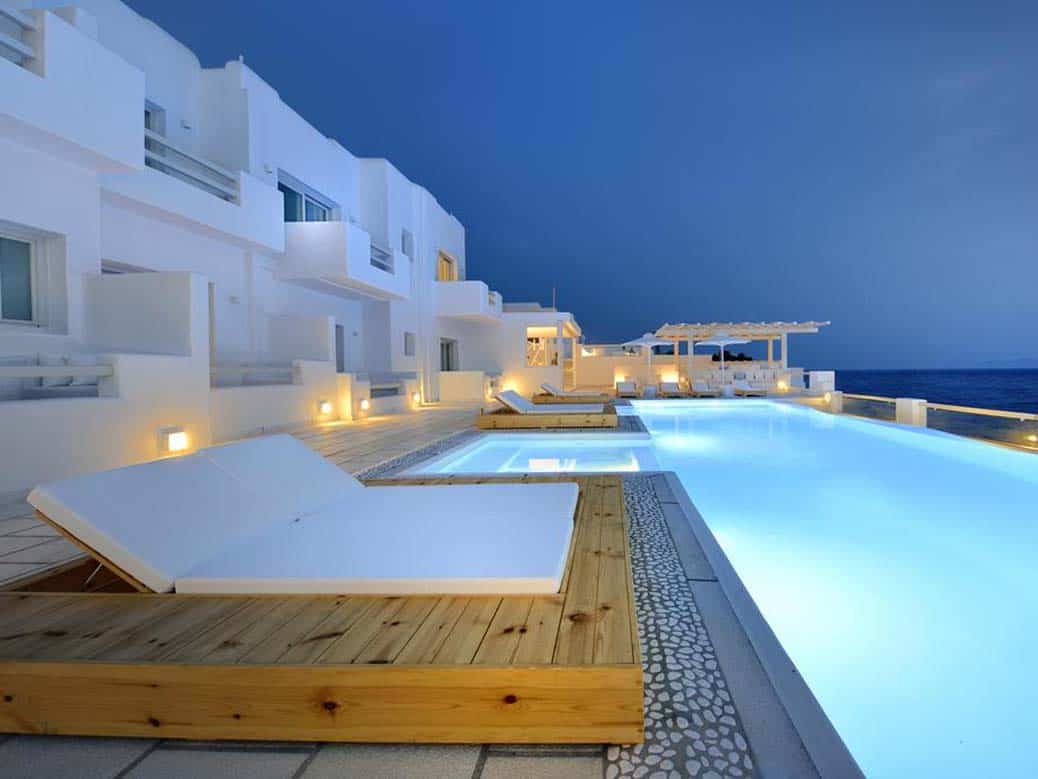
Even more romantic.
Ambassador Chicago
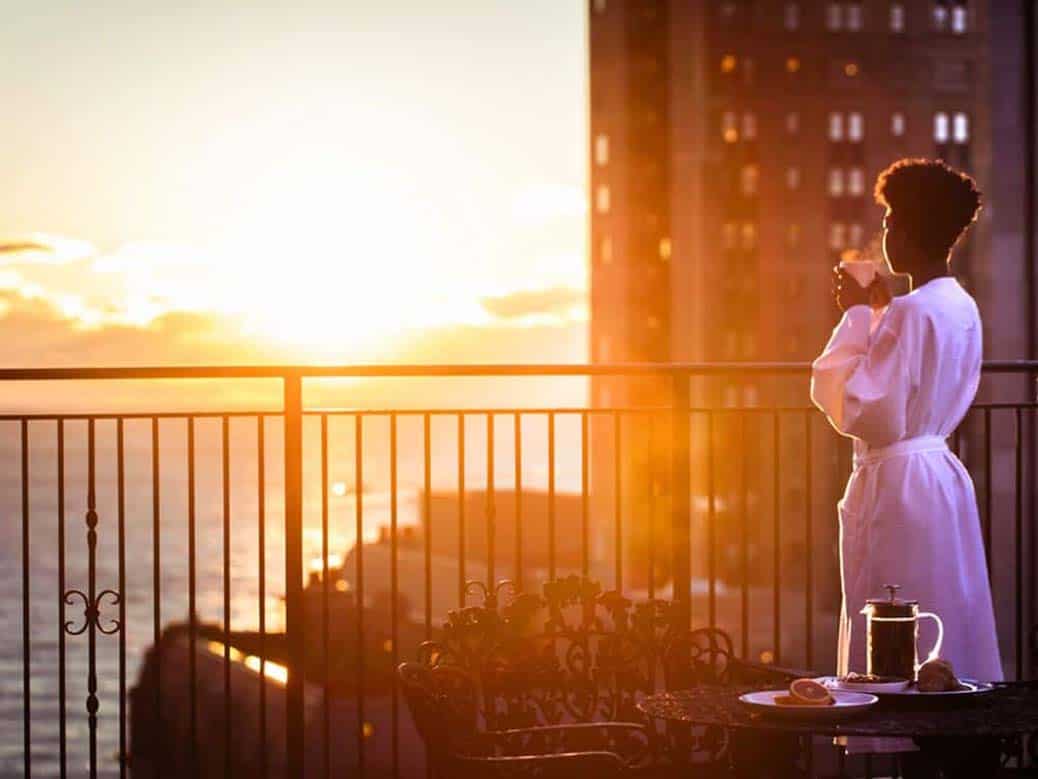
Do you want to be on that balcony, with this view, right now, as well?
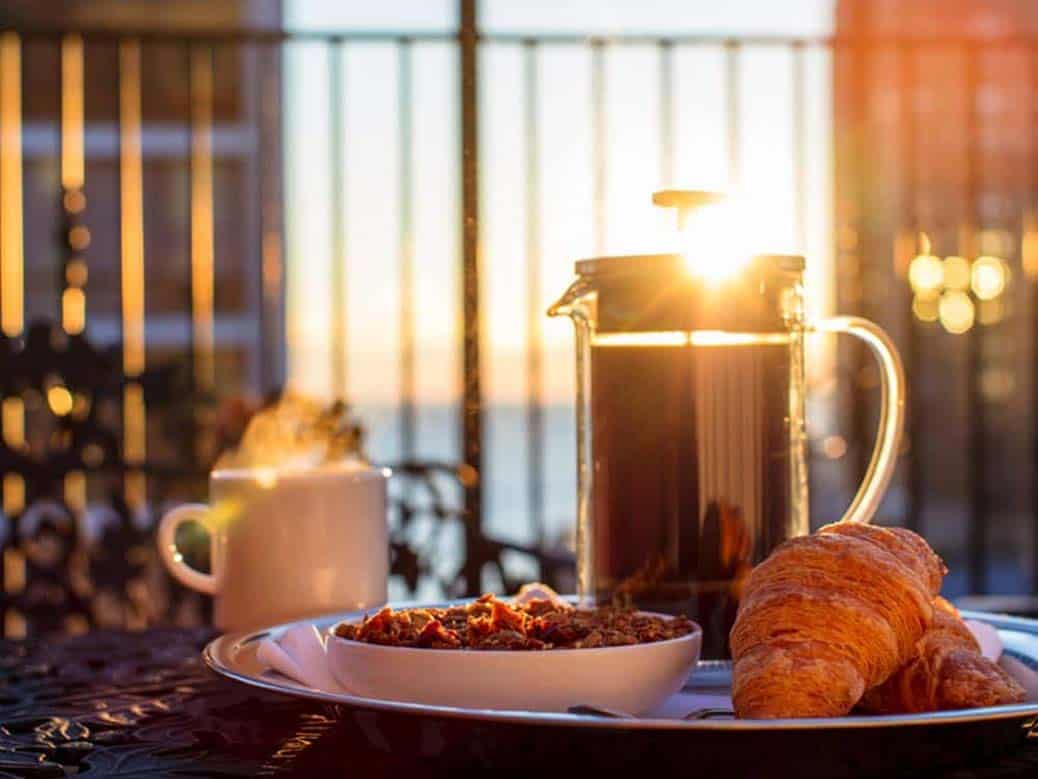
Additional detail to the previous photo.
5. Take lots of photos of everything including details – in DRO or Auto HDR mode
Find DRO or Auto HDR setting in your camera or phone and shoot in this mode.
DRO stands for dynamic range optimization, HDR for a high dynamic range.
Both functions improve the overall exposure, they bring out more details into both dark areas and bright areas.
This is especially useful in one particular moment when taking images of rooms becomes difficult – it is when there are strong value differences between the lit and shadowy areas of the room – i.e. a dark room and a bright window.
The resulting images can then be either over exposed or under exposed. DRO and HDR help to improve this.
Gary Fong shares how he takes HDR photos in his video with Sony A7 camera.
Take the best quality images your camera allows you to take – the biggest size, the best format – to have the best material to work with afterwards – you will resize your images to a smaller size for the web use later.
Using a tripod will help you set up your shot, ensure your images are not blurred and is a must to take images in a darker environment when the shutter of the camera needs to stay open for longer exposures.
If your camera has a hot-shoe on the top, you can attach an external flash – you can direct/bend this flash towards the walls or ceiling – the light then bounces off and helps make a room brighter.
You wonder why is it best not to use the flash that is on the camera itself (built-in flash)?
This flash fires light directly into the room (into the open space, therefore the light doesn’t bounce) and can create stark shadows or glare of the more reflective objects in the room.
Knowledge of some of the rules of photographic composition is not necessary – just helpful.
You could have a quick look at just one of them that might help make your photos more interesting – the rule of thirds.
This rule is about dividing your image into nine equal sections by a set of two vertical and two horizontal lines.
With the imaginary frame in place, you should place the most important element(s) in your shot on one of the lines or where the lines meet (see image below).
Cameras are smart – they will help you use this rule – there is an option in most cameras to switch on a viewfinder helper grid.
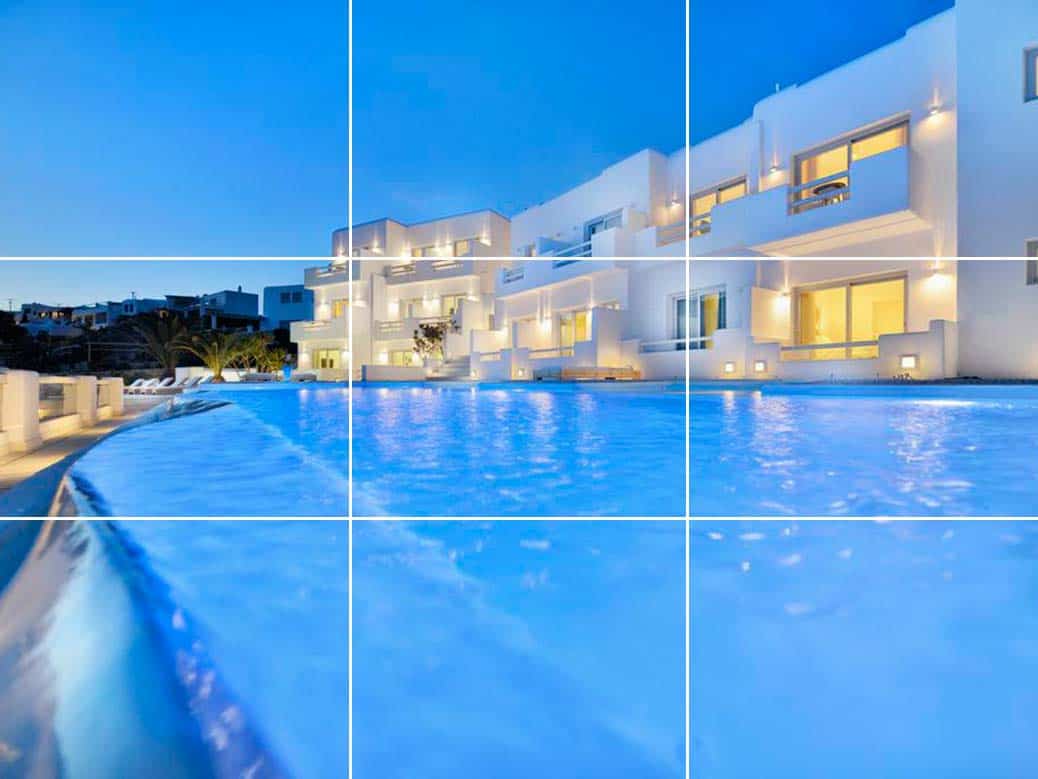
The object of interest here is the hotel building. It was placed on the upper right intersection of the grid. Left part of the building ends at the other upper intersection.
NOW LET’S FINALLY GET TO WORK!
Take photos of your rooms, bathrooms, reception, gardens, balcony views, swimming pools, dining rooms, conference rooms!
Take wide views.
And include meaningful details that are of importance to the guests, too.
Examples of good photos of details
Oia Collection Suites display beautiful photos of rooms’ details
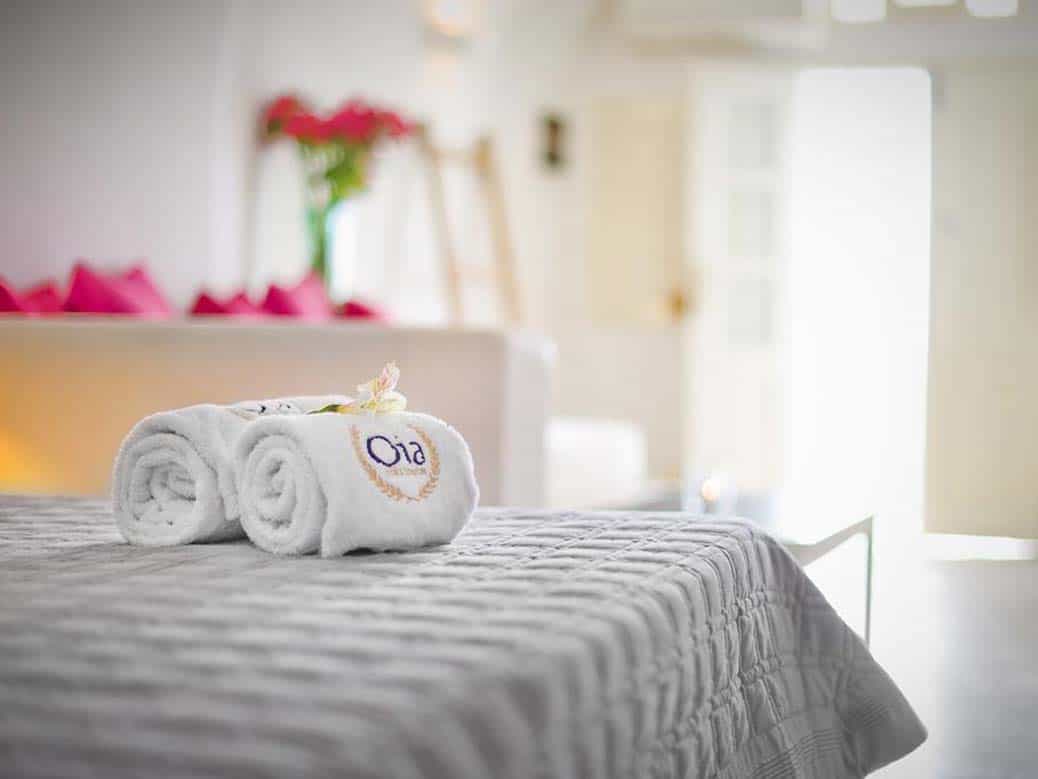
The suites use photos of details to draw attention to special amenities and to evoke a particular feeling or mood.
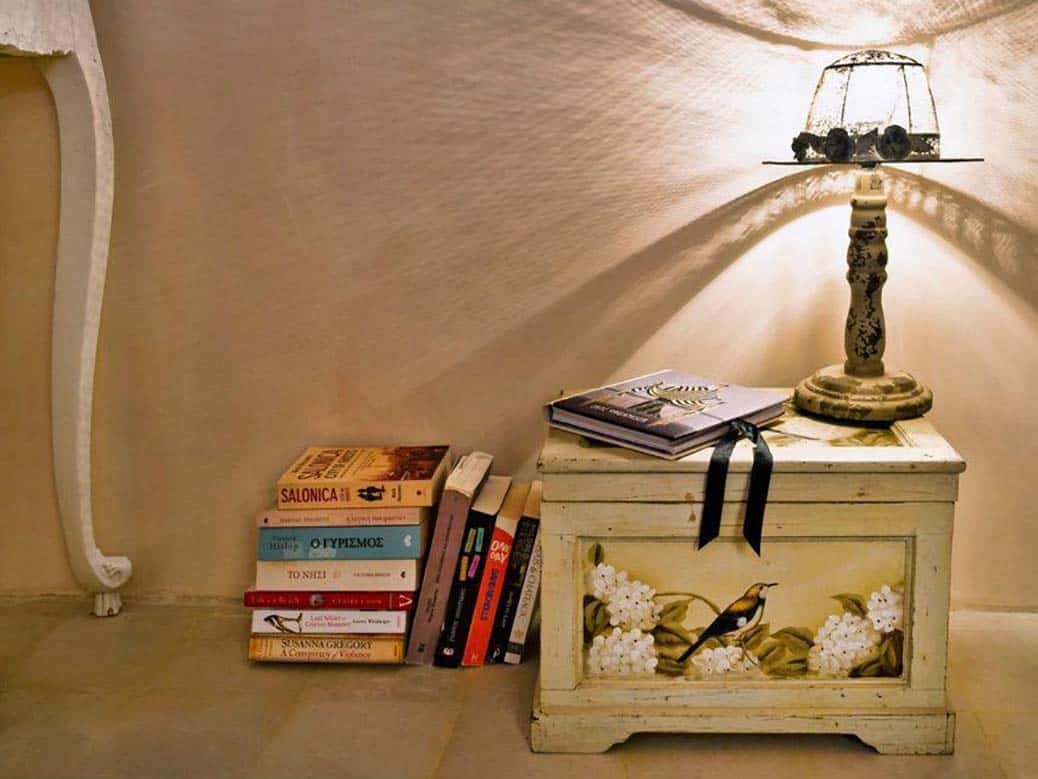
Lamps are switched on. Books add a warm human touch. They also create a ‘story’ (see further about storytelling).
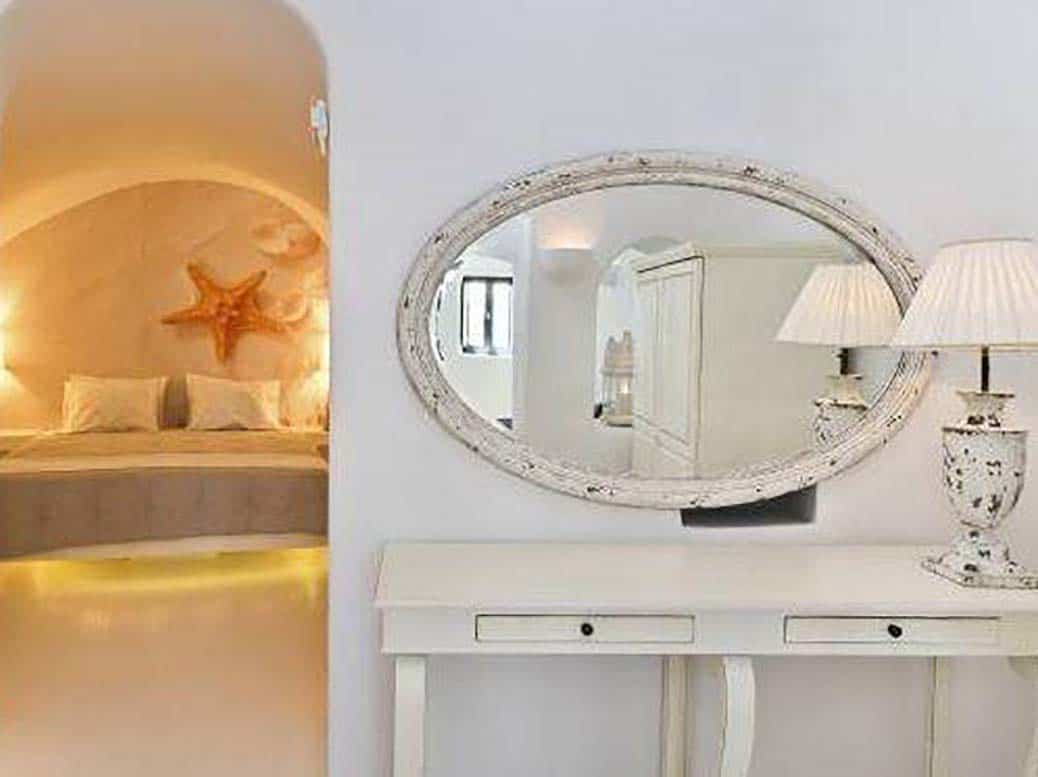
Example of a bad photo of a detail
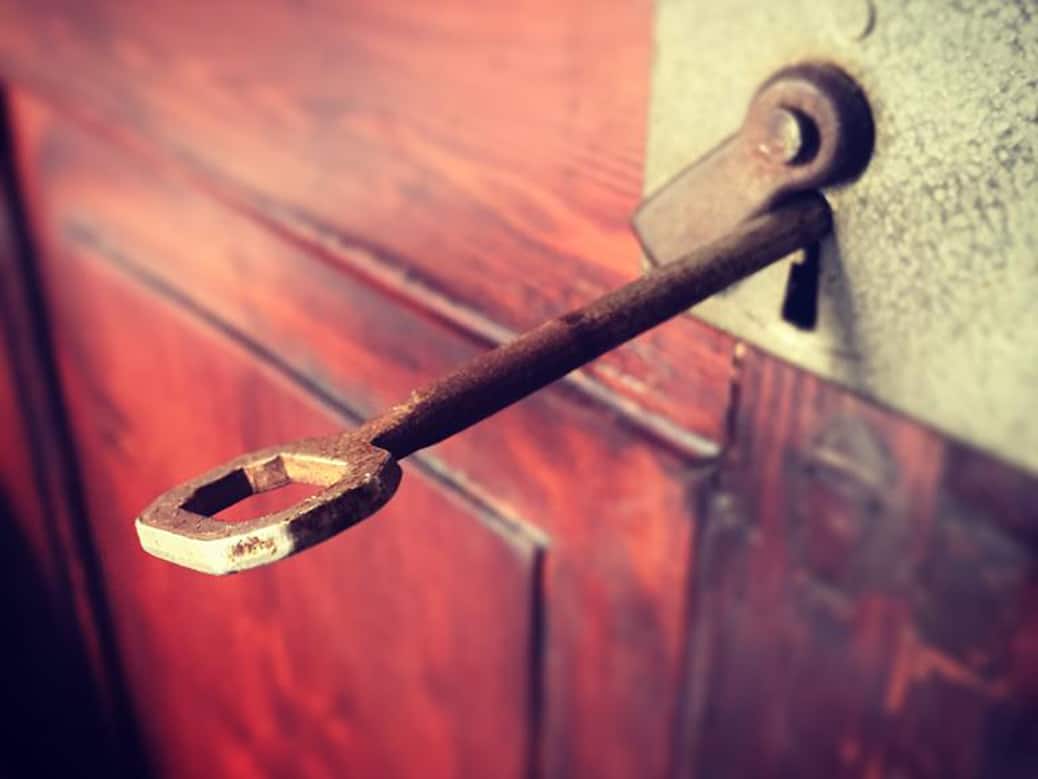
This detail photo posted on an OTA website by an Italian apartment is a useless piece of information to a guest.
6. Use people in your photos
It is great when a hotel uses people in their photos.
This way, guests can relate and imagine how they would feel staying at that place.
Pleasantly looking guests enjoying their stay – if you include them in your photos, your images will stand out and your place will look alive!
And if none – people should appear at least in your reception photos so guests feel there is someone to take care of them and your place is alive.
Remember, people with recognizable faces in your hotel photographs must give their consent to be in the images.
Good examples of people in hotel photography
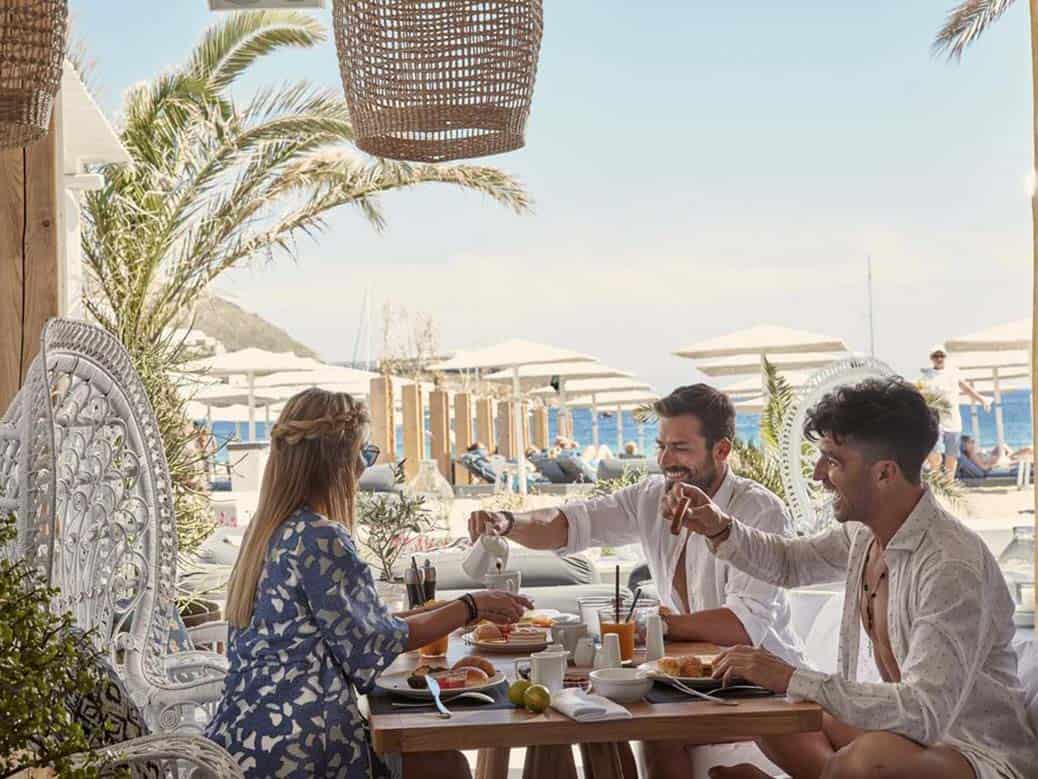
That’s always a good subject for your rental photos. People’s photos give life to your place.
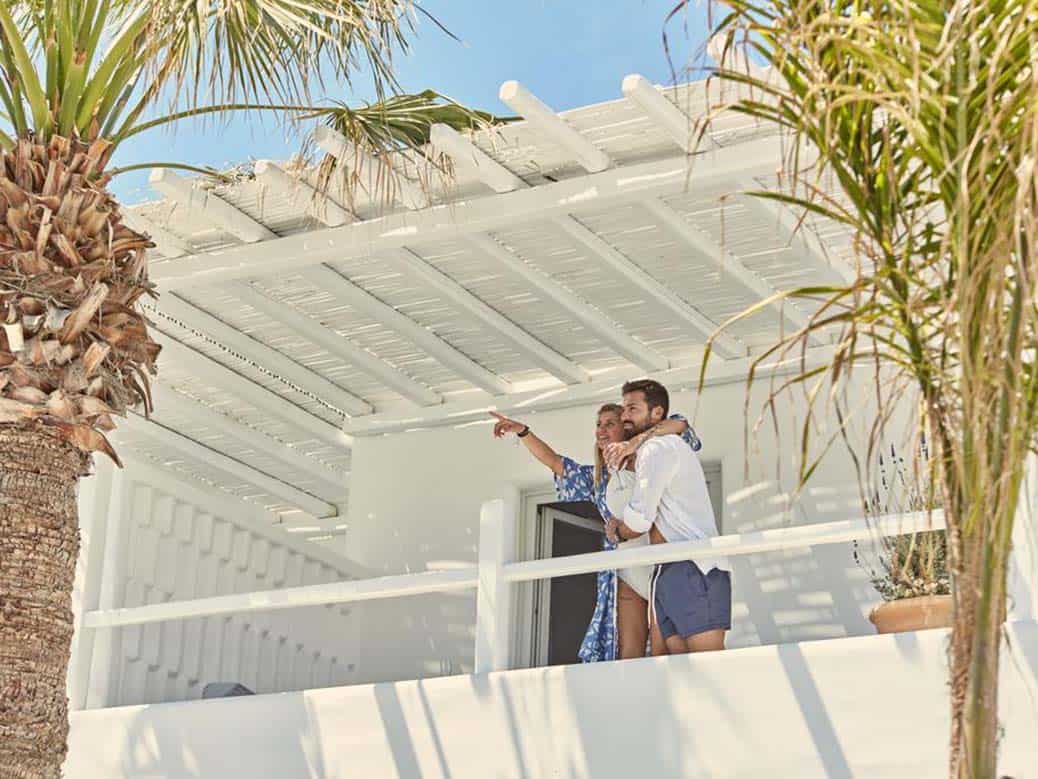
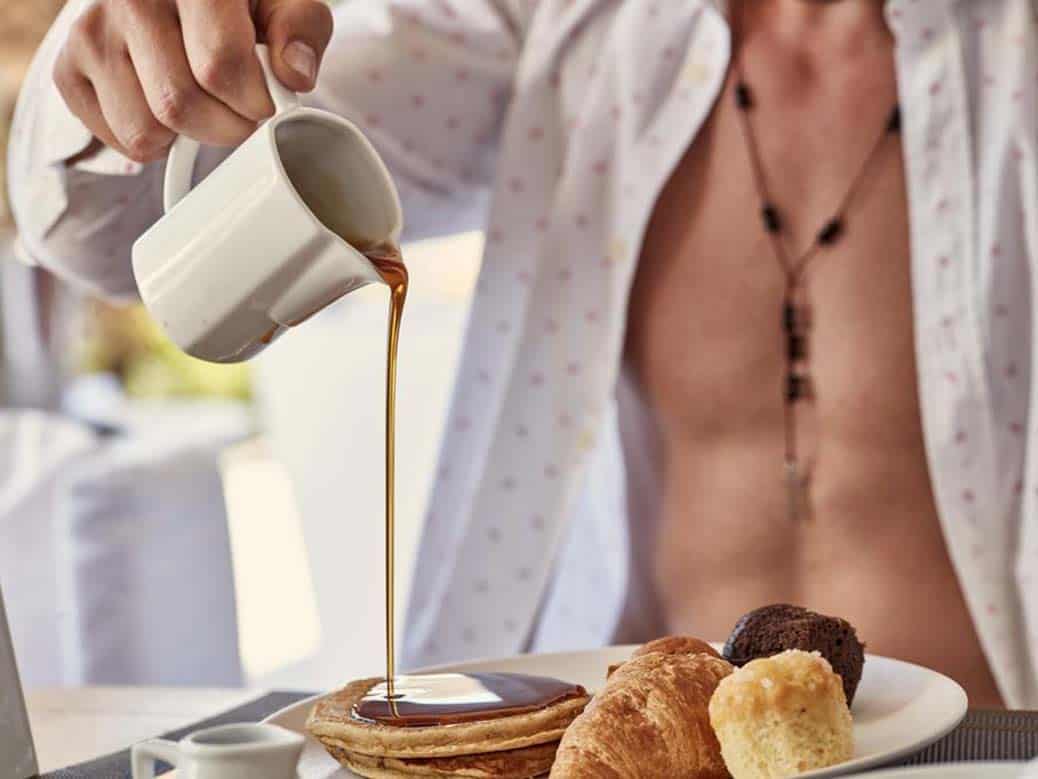
Hotel’s appeal to young sexy people.
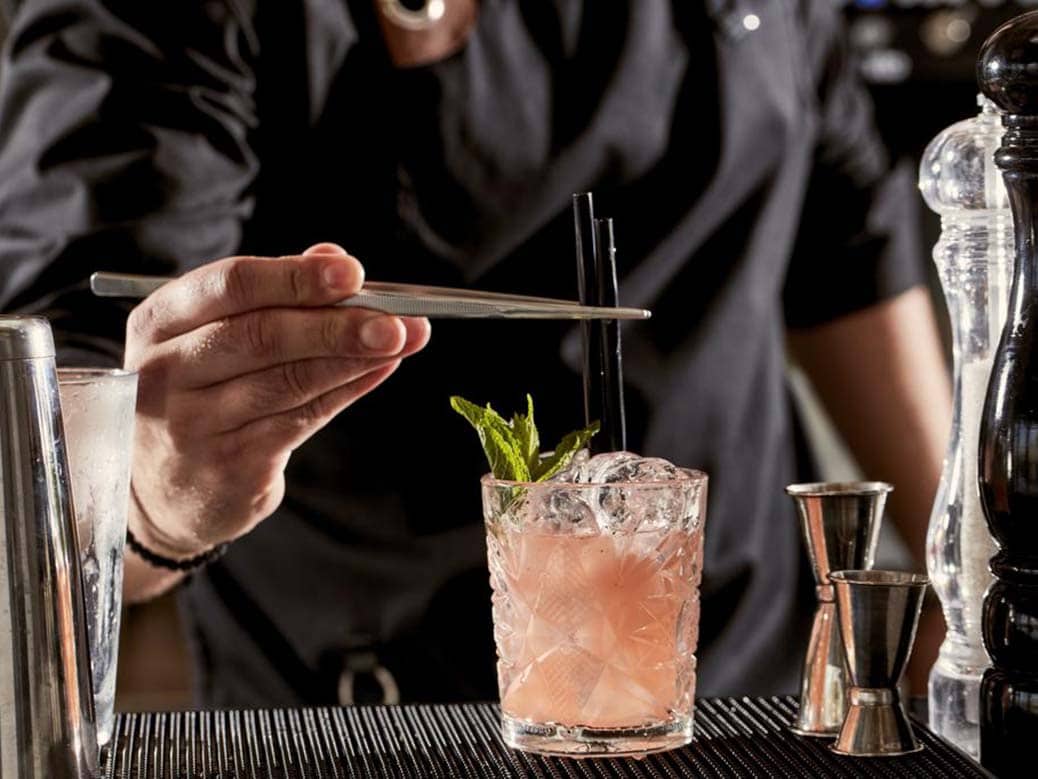
Refreshing drink prepared by a skillful barman (& outstanding hygienic practices).
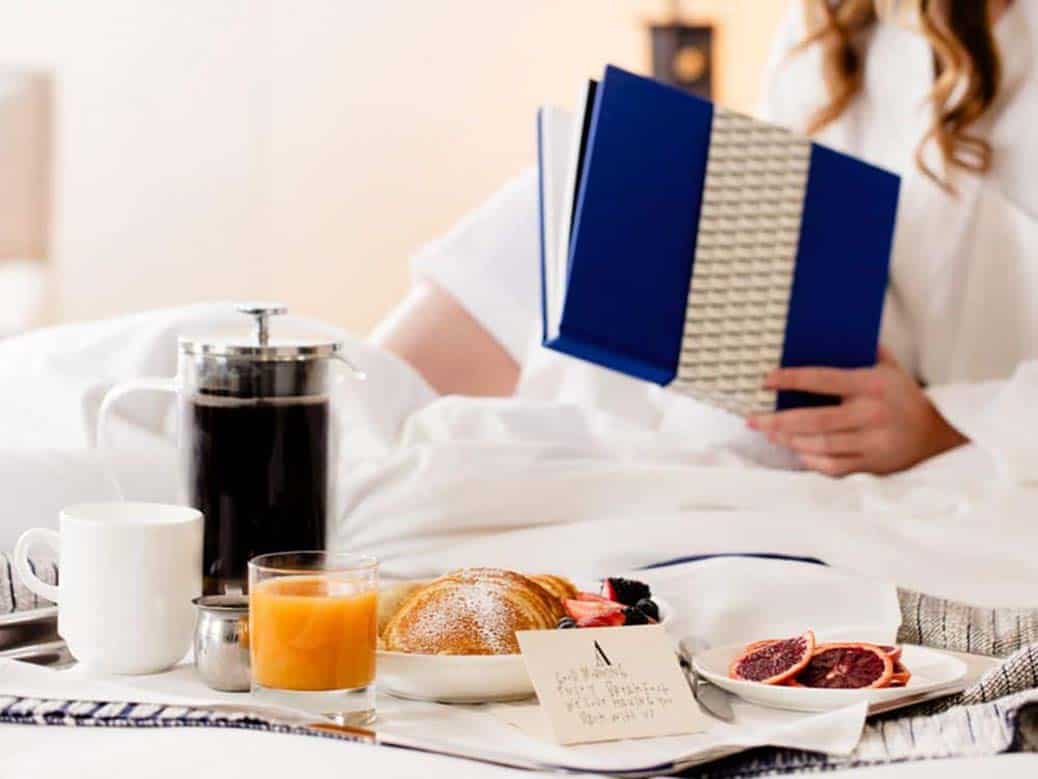
No face, but it is great to use such photo, too.
7. Tell a story with your photos
This one is big!
Not just showing your place’s photos but telling a simple story will lift the quality of your pics and tempt guests to book with you.
You can achieve this very simply!
Throw a few additions to the scene – personal items in the room, a nice robe over the bed, bottle of chilled wine and glasses, a piece of luggage, jewellery on a table, an open book, wedding flower bouquet, wedding dress hanging on the door, people, cute animals.
Use your imagination!
Breathe life into your photos and change the boring property images into pictures that inspire to take a trip to your place.
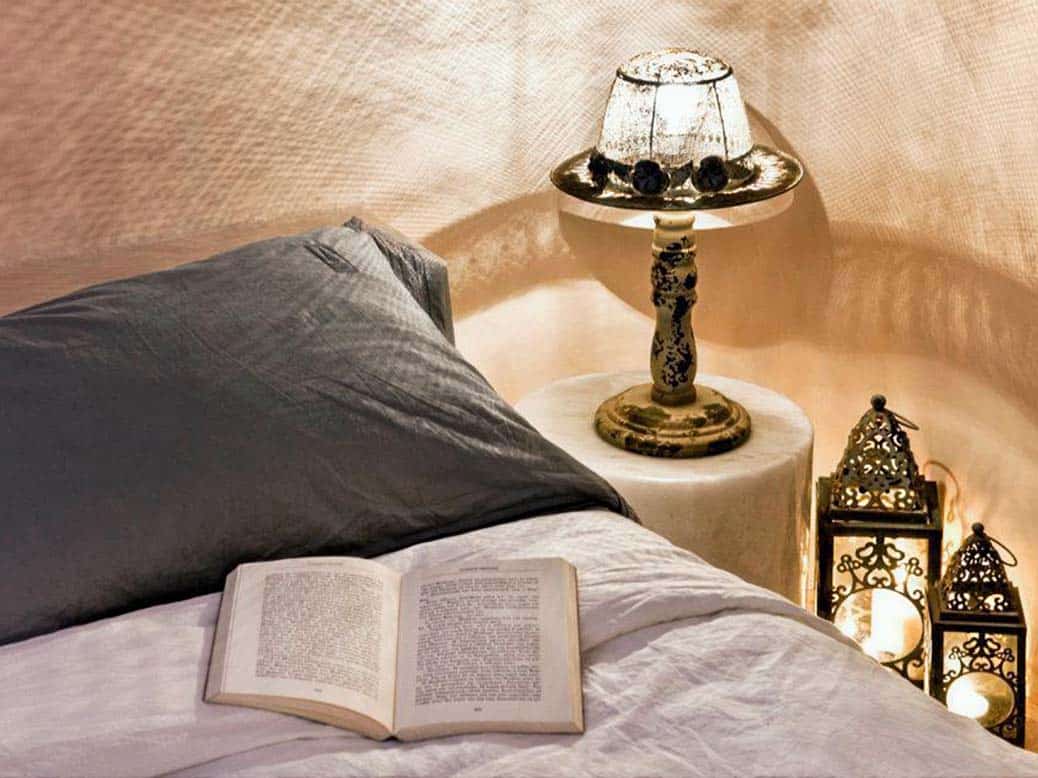
There is a guest staying in the room enjoying time reading a book. Feeling cosy.
8. Do computer corrections
You did a great job, took lots of photos, selected the best ones and now there is one last thing you could do to make them ROCK – improve them in a photo editing software.
By and large, every photo will gain on attractiveness by the means of photo editing programs such as Adobe Lightroom, Adobe Photoshop or even your basic image viewer that allows for brightness, contrast and saturation corrections.
Do some basic enhancements to your pics by using ‘auto correction’ of your photo editing app.
Just keep your photos looking natural, avoid overly high contrasts or oversaturation.
Or better – hire a graphic designer/retoucher to do a pro job – you will be amazed – they can do WONDERS for your photos!
This is a fun to watch video by Mike Kelley – how to retouch a hotel room photo in 10 minutes.
Done!
Conclusion
The takeaway is:
You can make great hotel photos by using a few tricks: have great styling, LOOOTS of light, add a magic mood by taking photos in the early morning and evening, use happy people in your photos, tell a story and show off your unique selling points.
Set your camera to take photos with the highest possible quality.
Note:
Before you upload your photos to your website, you need to ‘prepare’ them for the web.
Most of the time, your photos should not be uploaded to your server without being resized, downsampled (lowering their resolution) and compressed.
For more details, check out our photo optimization guide.
Good luck taking your own gorgeous hotel photos!
Merely wanna input on few general things, The website design is perfect, the written content is real excellent : D.
Nice to hear from you – thank you so much for your kind words! Much appreciated! Be well!